1lumen selects and reviews products personally. We may earn affiliate commissions through our links, which help support our testing.
Olight i3T EOS pinwheel review
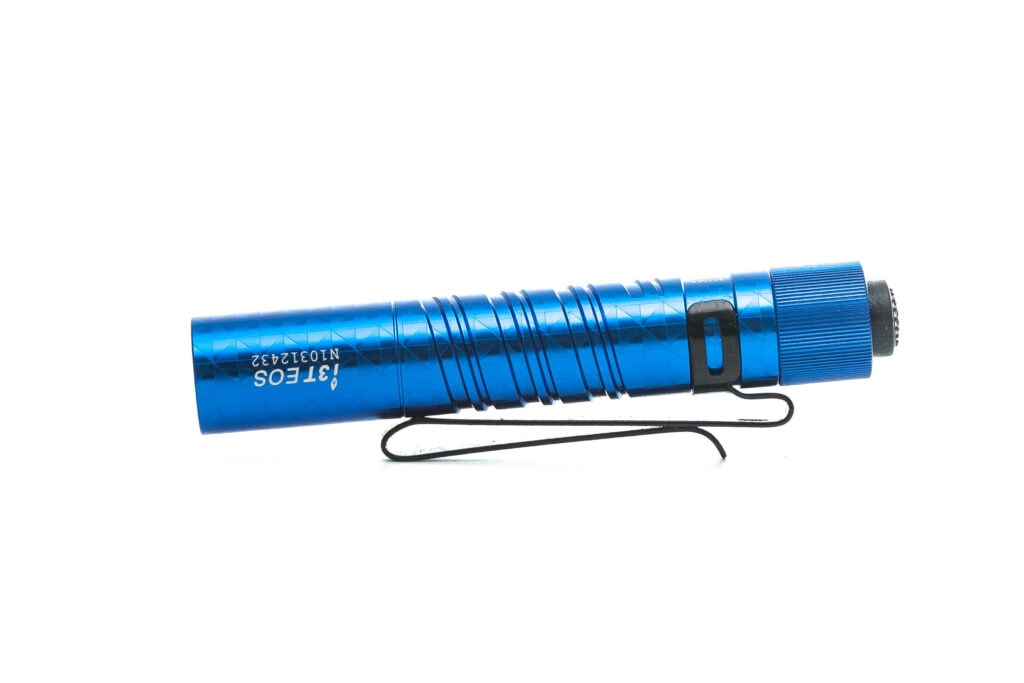
Olight i3T EOS specs
| Brand/model | Olight i3T EOS |
|---|---|
| Flashlight category | EDC flashlight / best keychain flashlight |
| LED | Philips LUXEON TX CW LED |
| Max. output | 180 Lumens |
| Max. beam distance | 60 meters |
| Max. beam intensity | 900 cd |
| Battery config. | 1*AAA |
| Onboard charging | None |
| Modes | 2 |
| Blinkies | N/A |
| Waterproof | IPX8 |
| Review date | February 2023 |
Introduction:
Olight was founded in 2007 and started building some interesting flashlights. And in recent years, they started adding numerous kinds of lighting products, including non-lighting, outdoor products. So, they elevated from a normal ‘flashlight brand’ to an ‘outdoor brand’. This new lineup of outdoor products includes knives, hammocks, pry bars, sunglasses, and more. That’s also why they opened a new website called obuy.com.
But, let’s get back to the review.
You’re saying this doesn’t look like a new light? That’s correct! It’s a new version of the i3T, called the Olight i3T Pinwheel. But the pinwheel isn’t any different from the regular i3T except for the coating design. It has lots of small pinwheels, hence the name.
Oh, and since someone pointed out that the i3T is likely the brightest flashlight in its class, I just had to get one for testing.
Package quality.
The packaging looks fine for the price, and contains the following:
- Olight i3T EOS
- Pocket clip (pre-attached)
- Alkaline AAA battery
- User manual
Edit: the Olight i3T has been upgraded to the Olight i3T 2 EOS
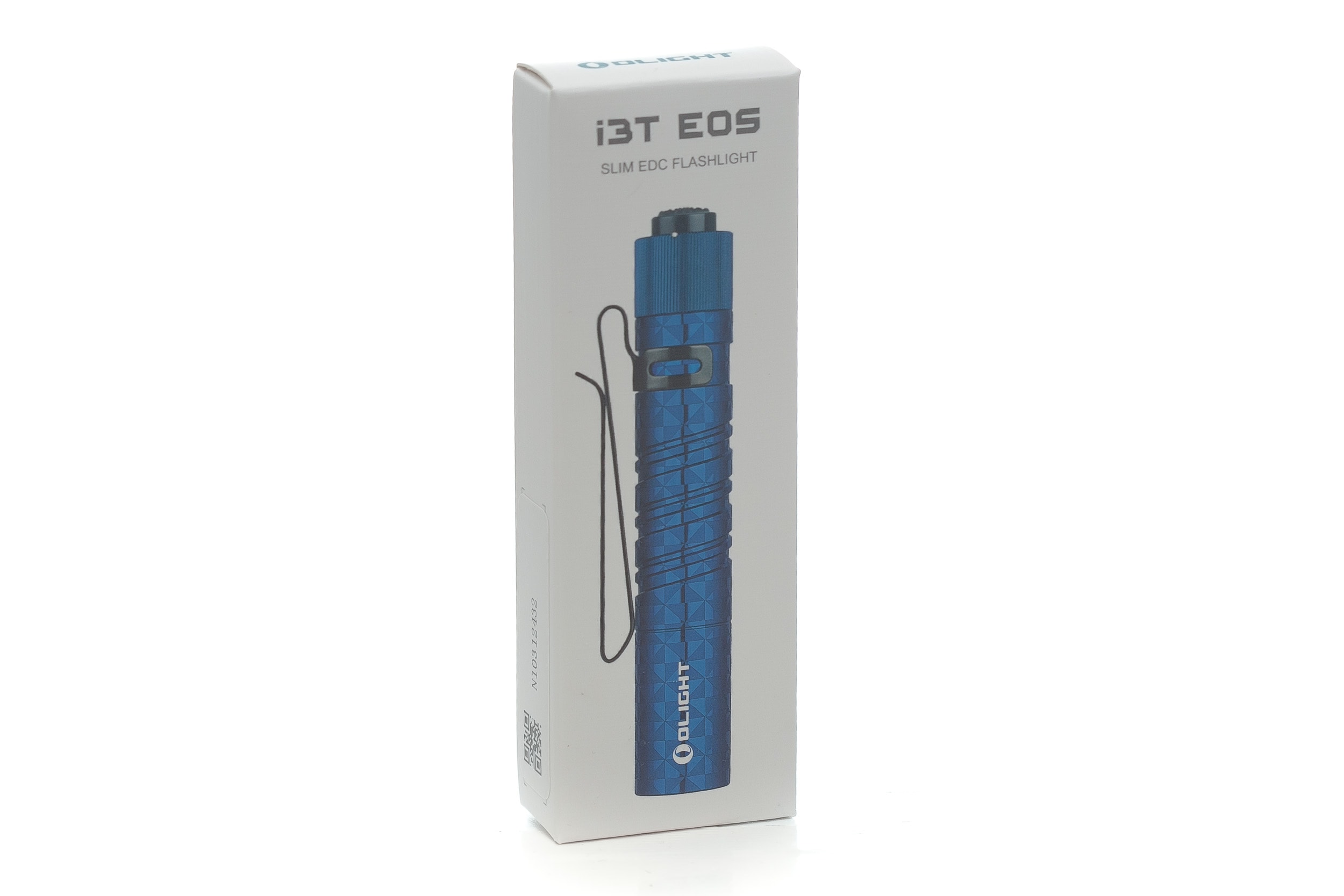
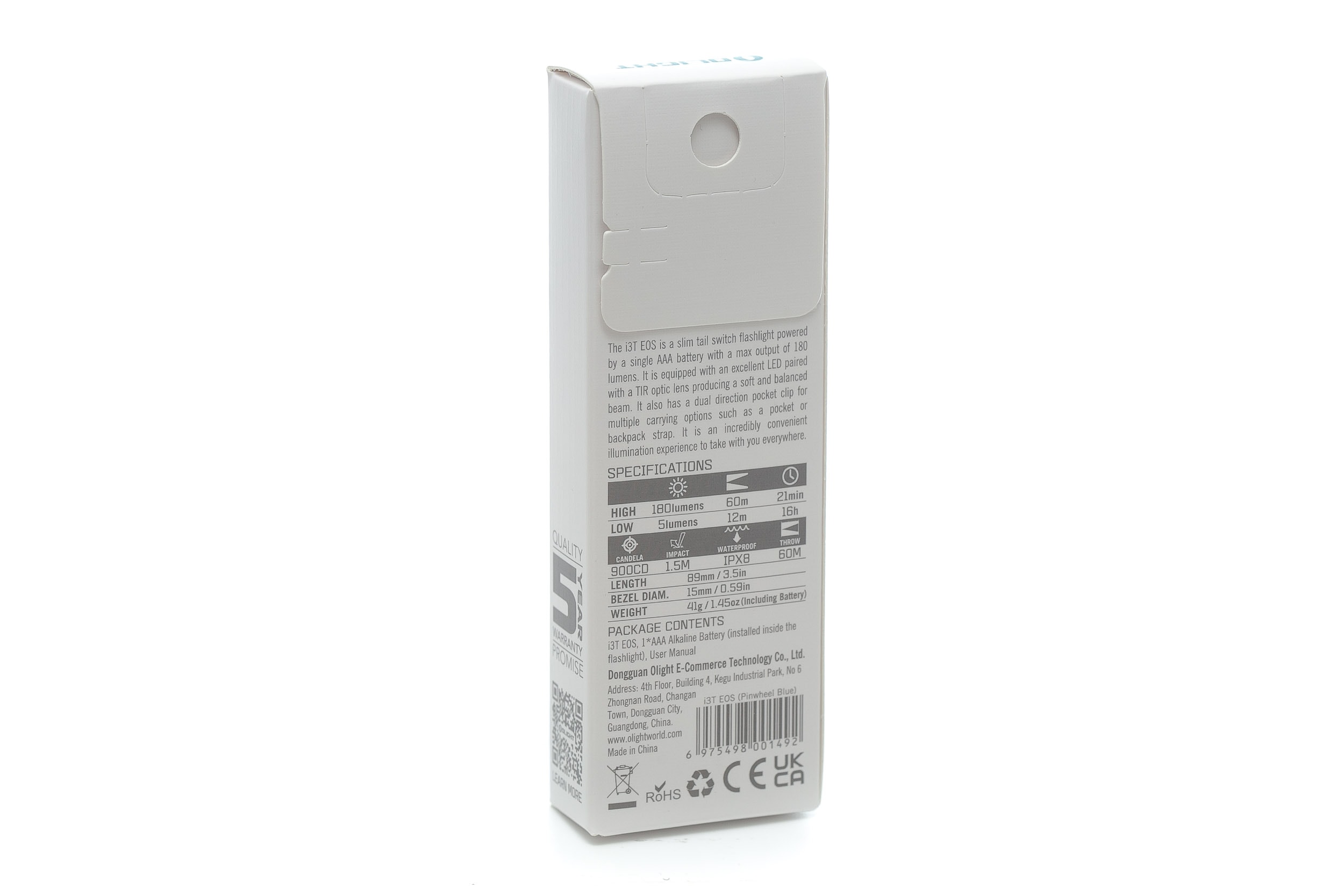

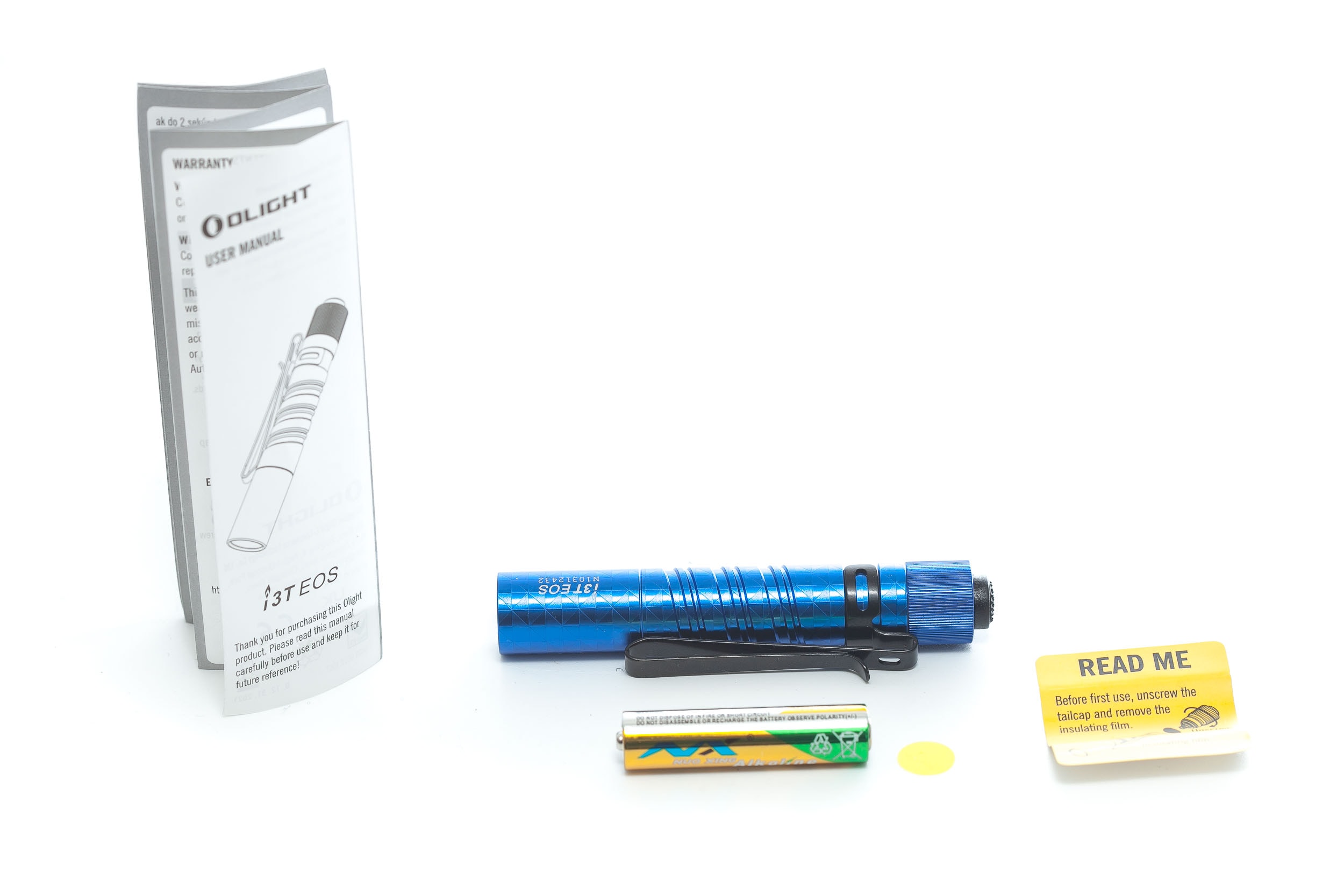
Flashlight in use
The Olight i3T has a single switch, located at the tail-end. And it’s a forward-clicky switch: half-pressing the switch will give you momentary light. When you repeat the half-pressing, you’ll switch between the 2 modes, low and high. When you fully press the switch, you’ll hear a click, and then your mode is set. If you want to change modes, you have to turn the light off and repeat the half-pressing until you have the other mode selected.
Keep in mind that reverse clicky switches work in a different way. Those will only turn on when you fully press the switch and after you hear the click.
There’s no way you can tail-stand the i3T EOS, because of the protruding switch.
In terms of carrying, you can use the pre-attached 2-way pocket clip. It’s attached just below the tailcap, and as the name implies, can either point it upwards or downwards. The clip also has a tiny hole, that you can use to attach a lanyard and keychain. The package, however, doesn’t include a lanyard, or a split ring, but there are plenty of them online for cheap. The pocket clip also serves as an anti-roll feature, so it won’t roll off the table.
As a keychain light, I think it should have a lanyard attachment on the body, and not just on the pocket clip.
And on top of that, you can use the clip to attach the light to a baseball cap, so it can serve as a ‘headlamp’ as well.
The i3T EOS is a very capable keychain flashlight. But you can also use it for EDC, because of the low weight, and small size. But for EDC, I’d recommend getting little bit brighter flashlight. Also, make sure you check out its bigger sibling, the Olight i5R EOS, an AA-sized flashlight.
The claimed output of 180 lumens should be good enough for things around the house, but the output may not be enough for outdoor activities like camping, etc.. unless you just use it to walk around the campsite, or if it’s used by kids.

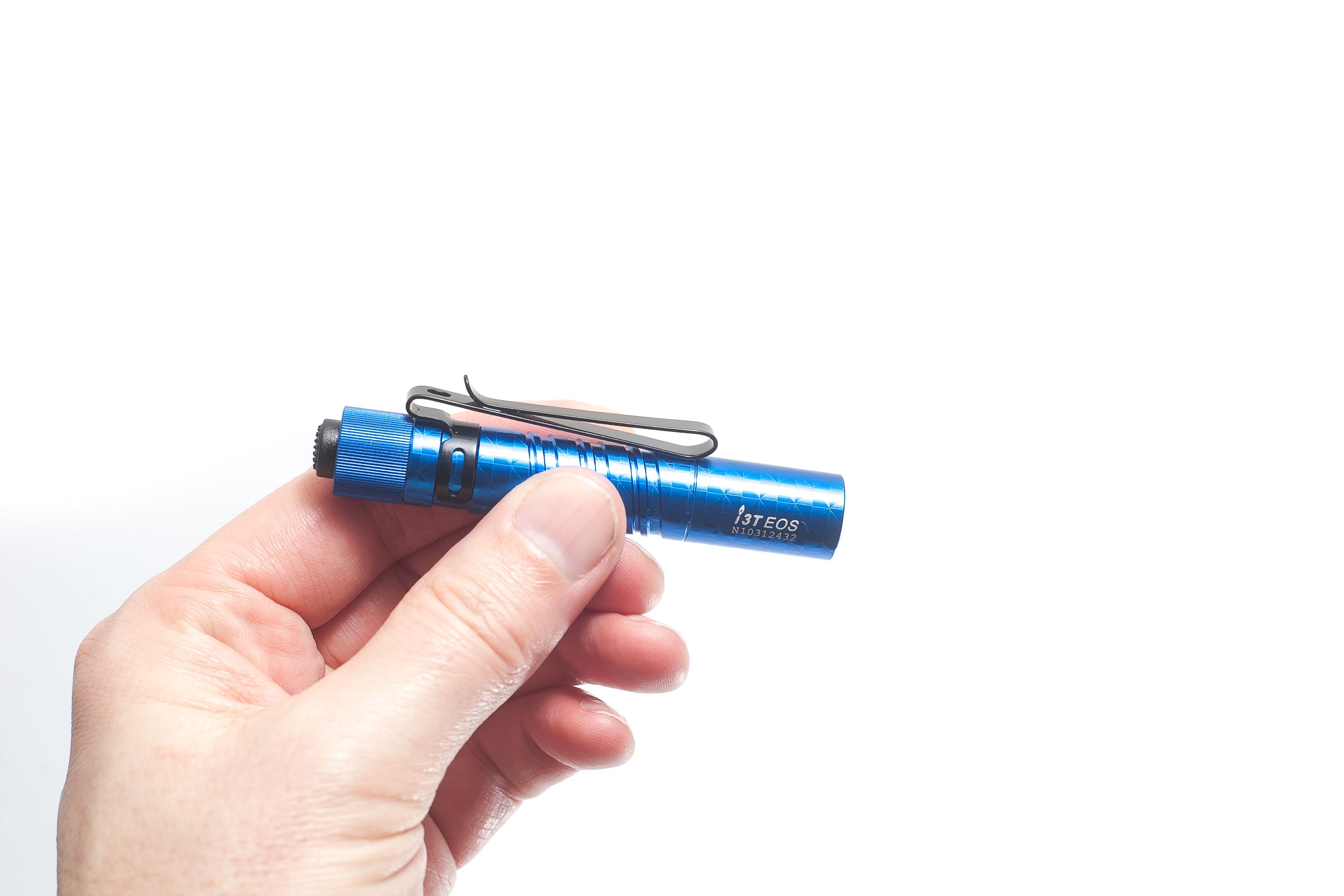
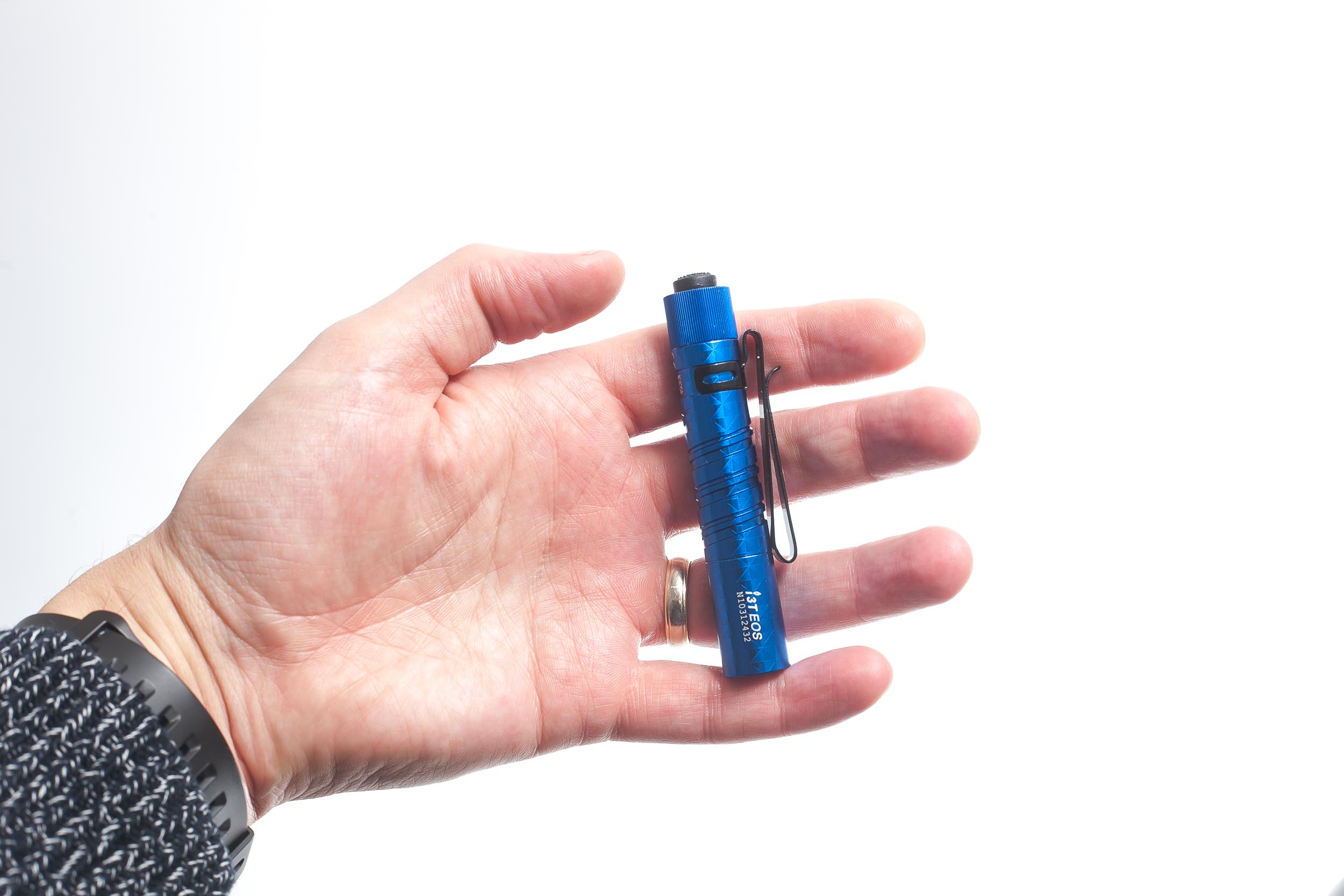
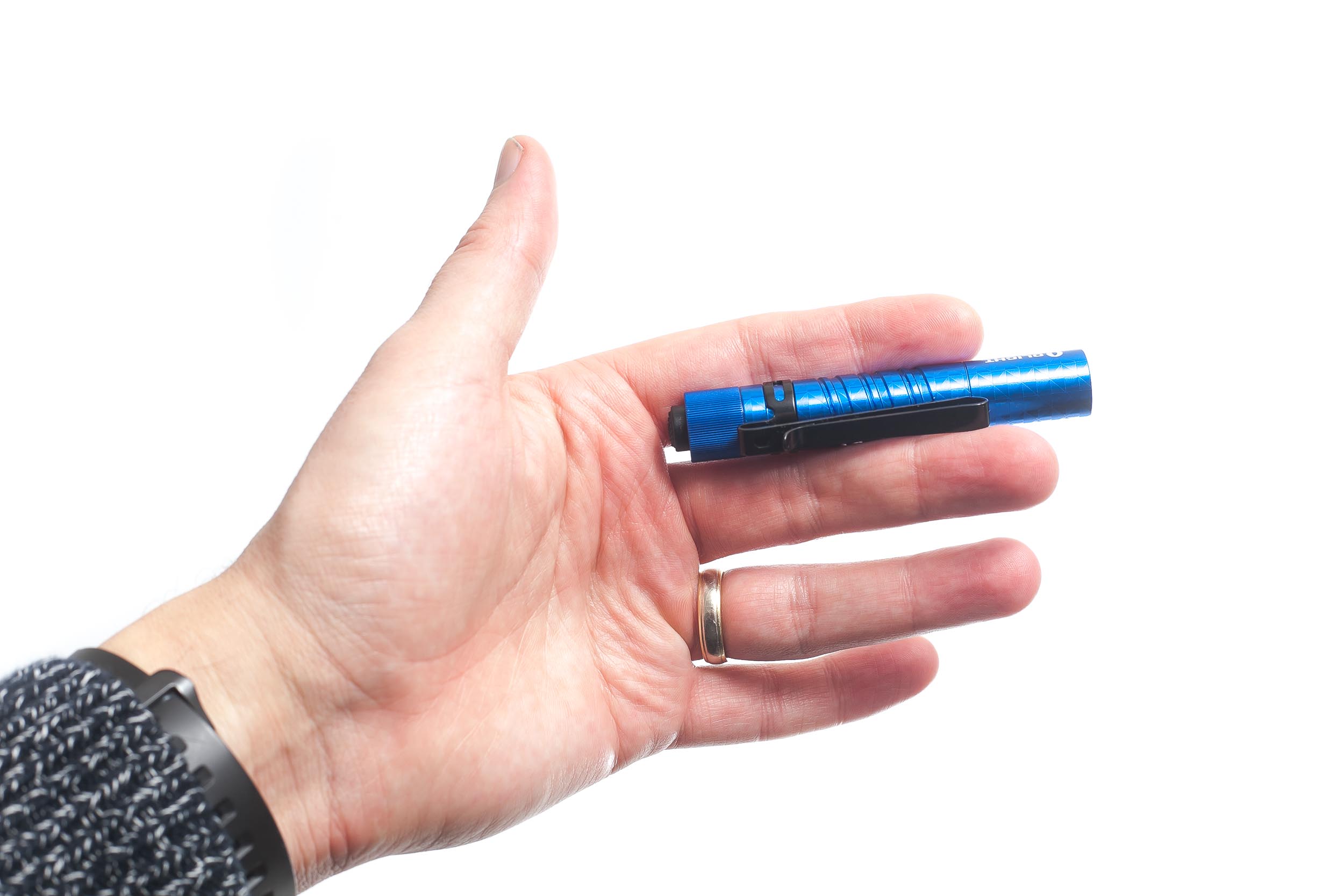
Build Quality, and Warranty
Just like with all other Olight flashlights I have, the i3T is built very well.
The switch is actually the only part you can unscrew from this flashlight. Everything else is glued tightly. When you unscrew the tailcap, it feels nice and hefty, and you’ll notice the copper/brass threads.
The battery tube doesn’t have the traditional knurling, but 2 parallel lines going around the body. Please see the images.
The blue anodization is shiny and looks very good without any defects, chips or other problems. At the moment, this is the only pinwheel version available. But I guess they will include a different color as well. Keep in mind that this is the same flashlight as the normal i3T EOS, except for the coating. The normal (non-pinwheel) version is also available in black and desert-tan.
The pocket clip is black, just like the i5R EOS, and can be used in both directions, but it doesn’t appear to be extremely strong.
Olight’s warranty:
At Olight, we always care about your experience as a customer and want to ensure you have no concerns regarding after-sales service. On September 16th, 2023, we sincerely make the following important promise:
If you purchased an Olight® product from Australia, China, France, Germany or the USA after January 1st, 2023, the local service centers in these countries will honor your LIFETIME WARRANTY for your purchase. If your Olight® product (including its structure, built-in battery, LED, or lens) ever experiences any issues, we promise to take care of it. If we are unable to repair your product, we will promptly replace it with a product in perfect working condition, which will be of equal or better physical condition. If your purchase is a limited or discontinued edition of Olight® product, we will repair or replace it with another Olight® product of the same or higher value.
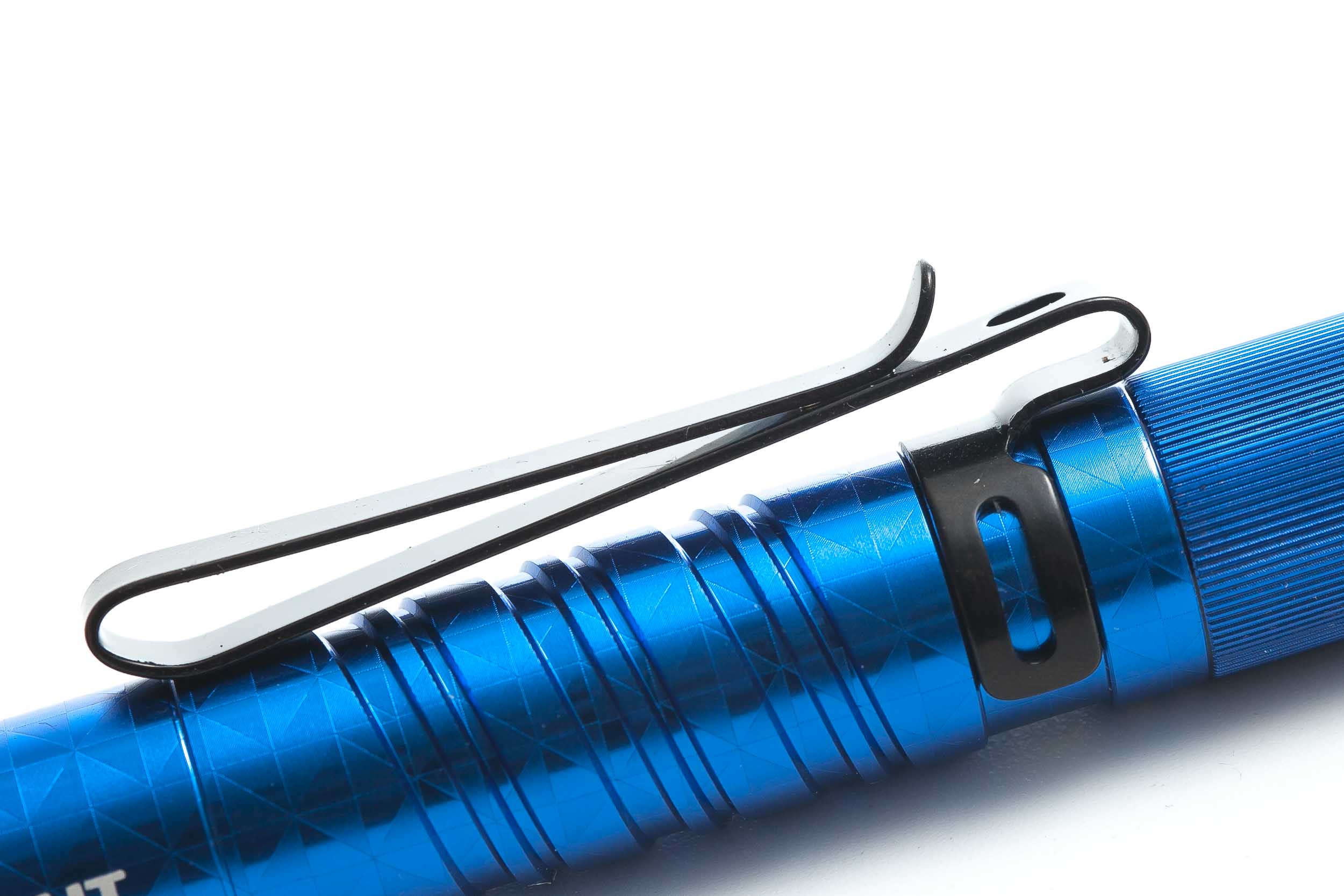
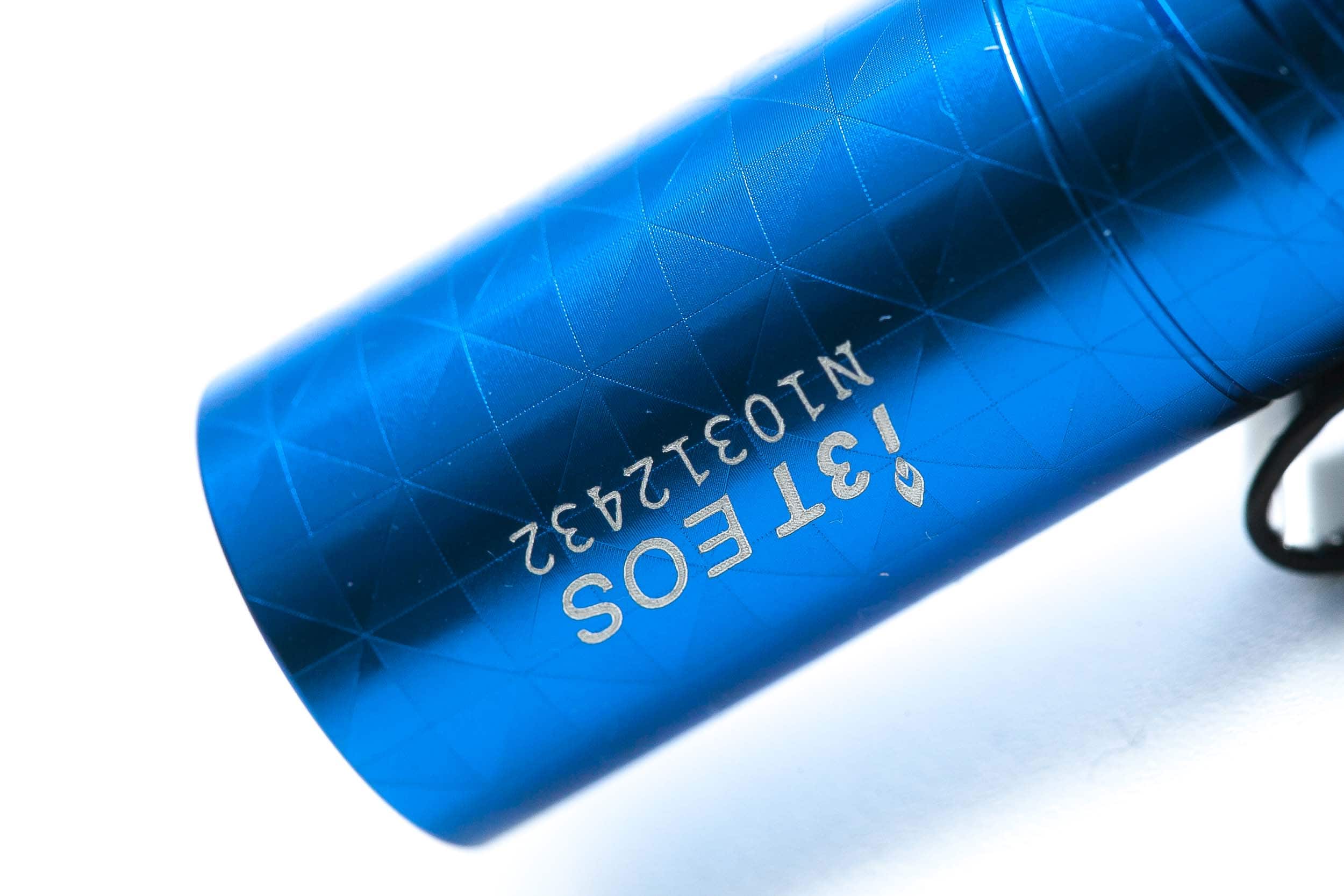
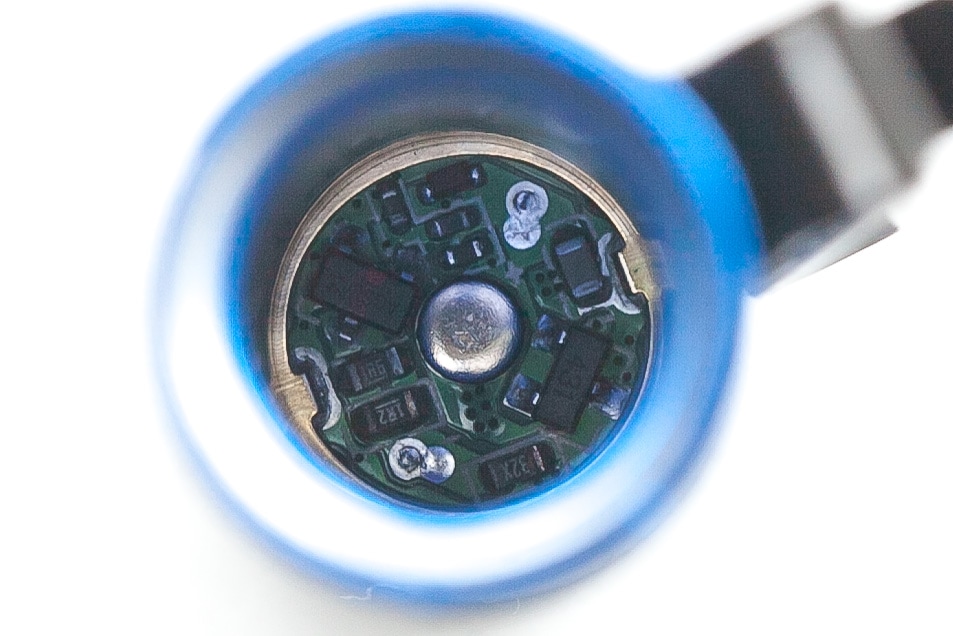
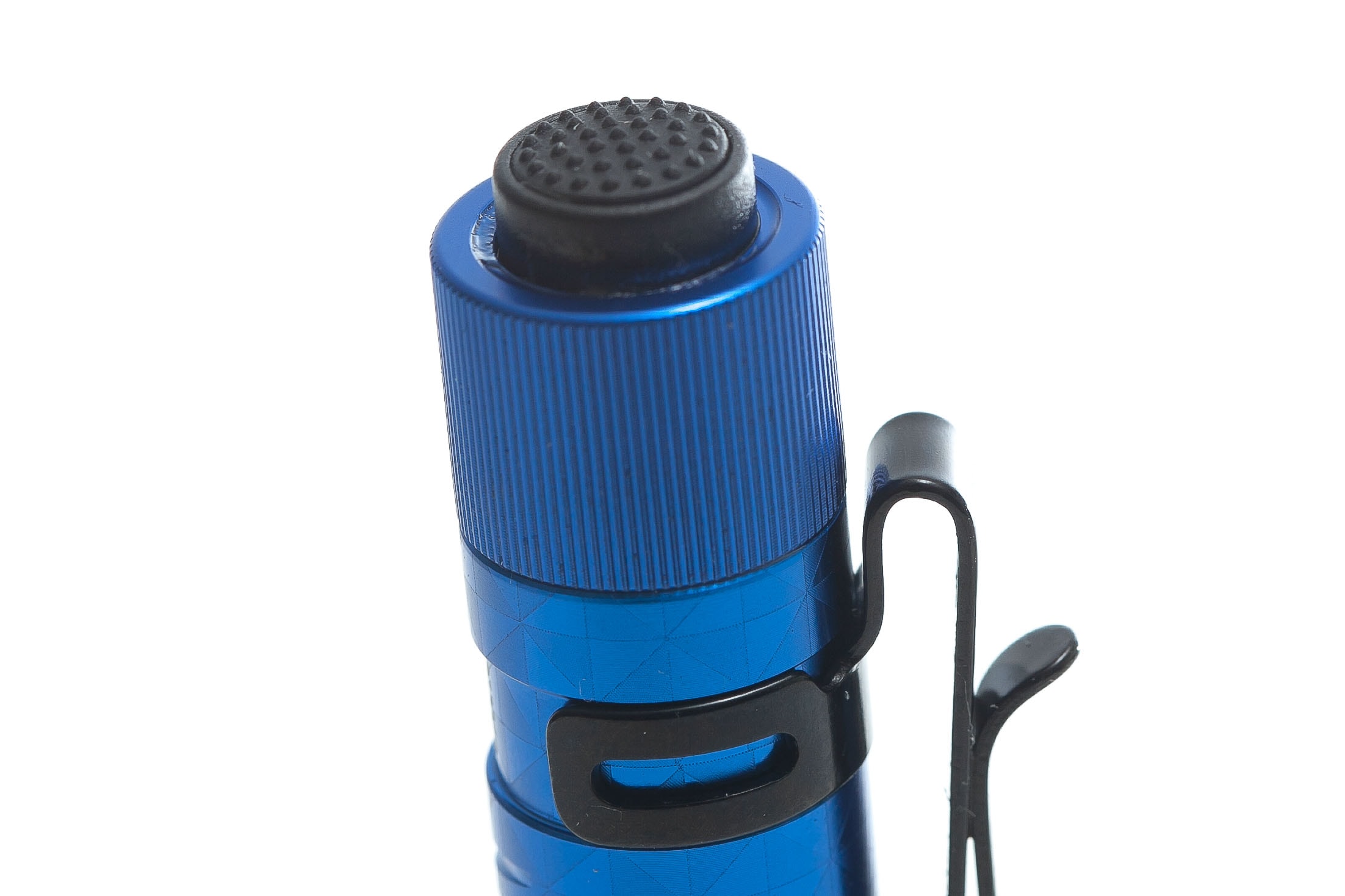
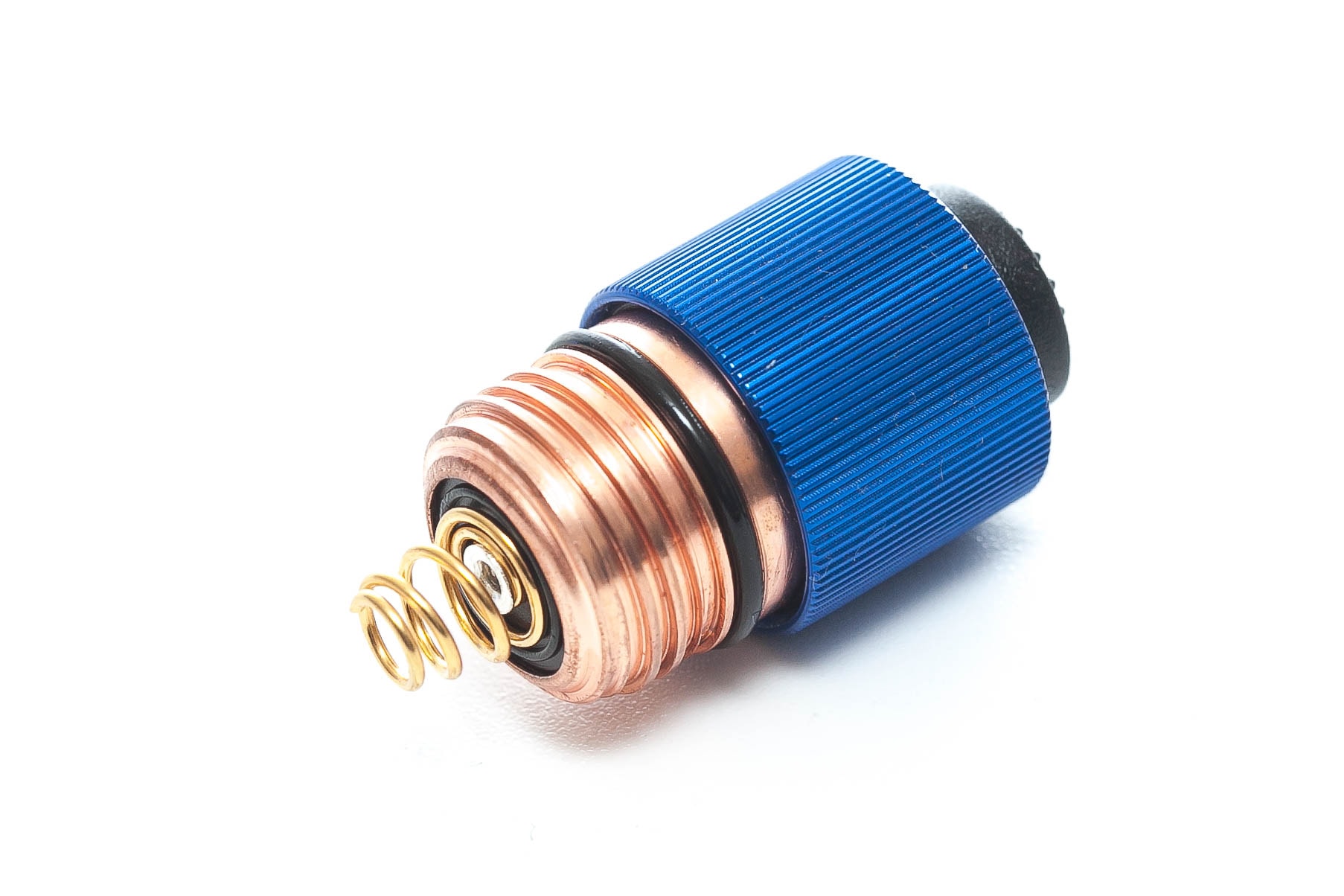
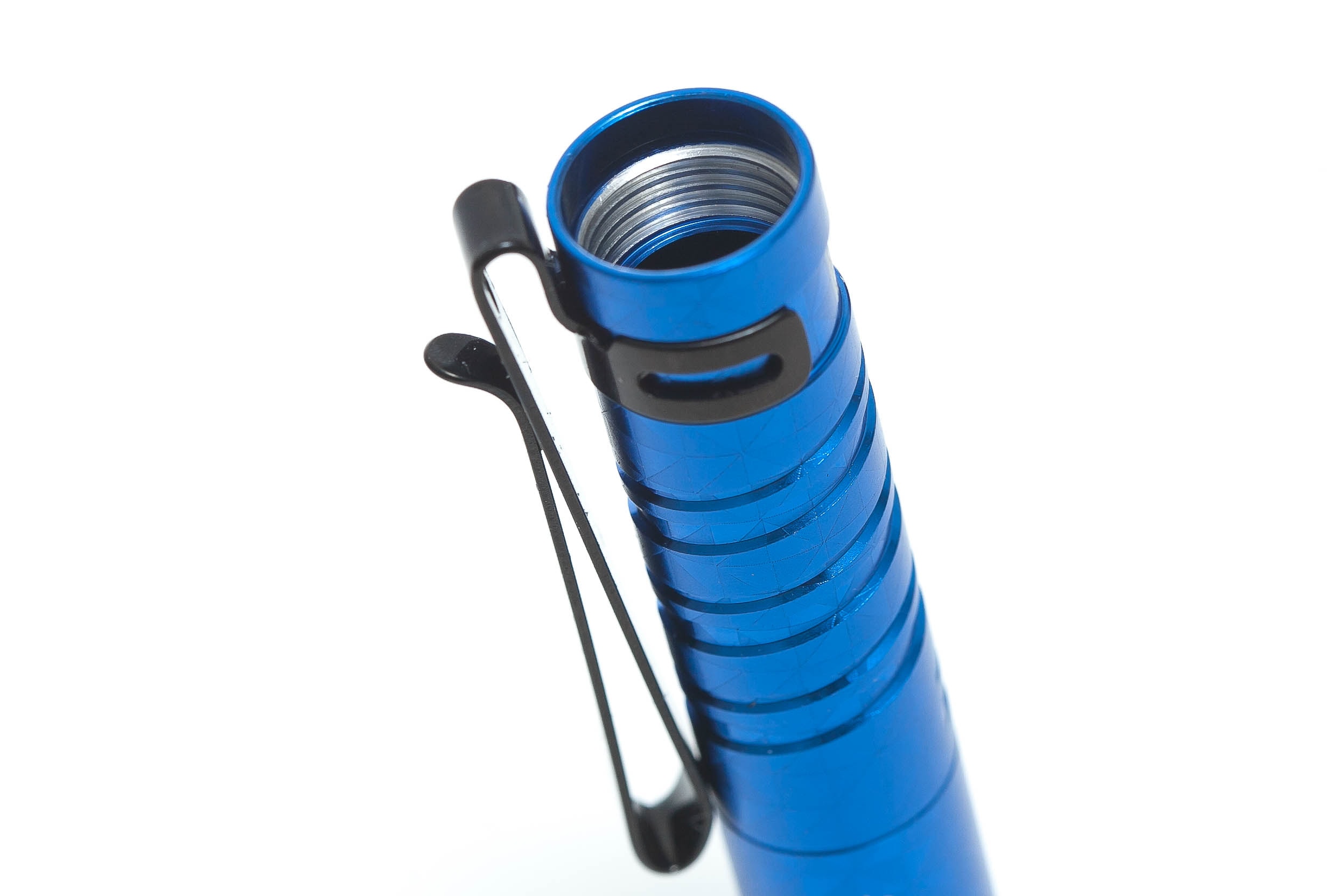
LED, Lens, Bezel, Beam, and Reflector
This time, Olight shows the name and type of the LED on their website. It’s named: Philips LUXEON TX CW LED. This means it’s a cold white emitter, and is likely low CRI.
And CW is usually at 6000K+, but we don’t just trust the specifications because we actually test it.
This time I use a Spectrometer called the Asnsetek Lighting Passport Pro, and measured the beam at about 2 meters distance. It was handheld, so take these as averages.
High mode measured at 2 meter, even though the spectrometer said it was over-saturated. This could normally result in lower numbers.
- CCT: 5471K
- Ra (CRI): 72
- DUV: 0.0134
If you don’t understand what this all means, no worries. CCT is the color temperature of the light. The lower the number, the warmer. 5500K is towards cool white, while 6000K would be cool white.
I personally like it between 5000K and 5500K..
DUV is a bit positive, which means a little greenish. A negative DUV would be a bit more pinkish.
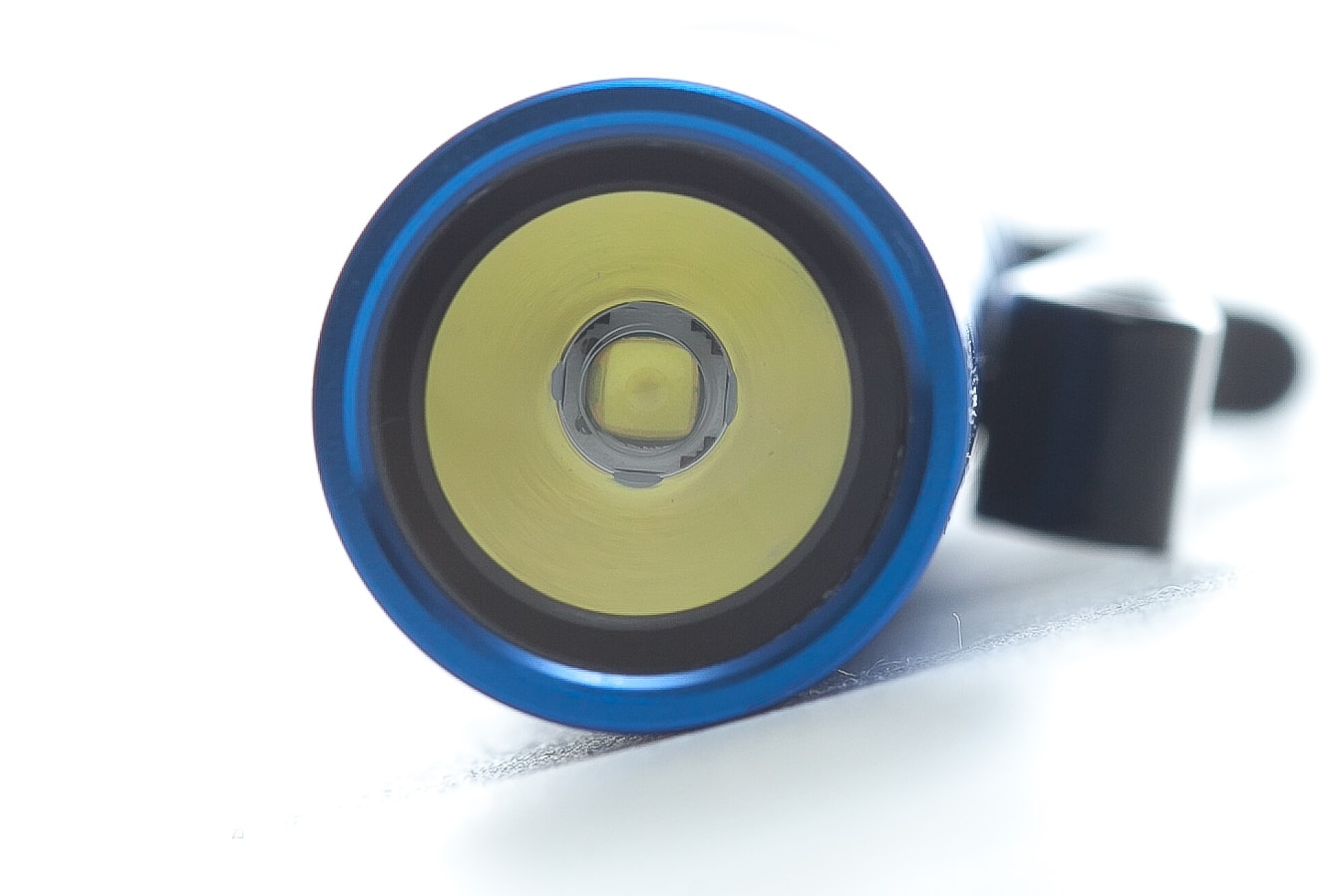
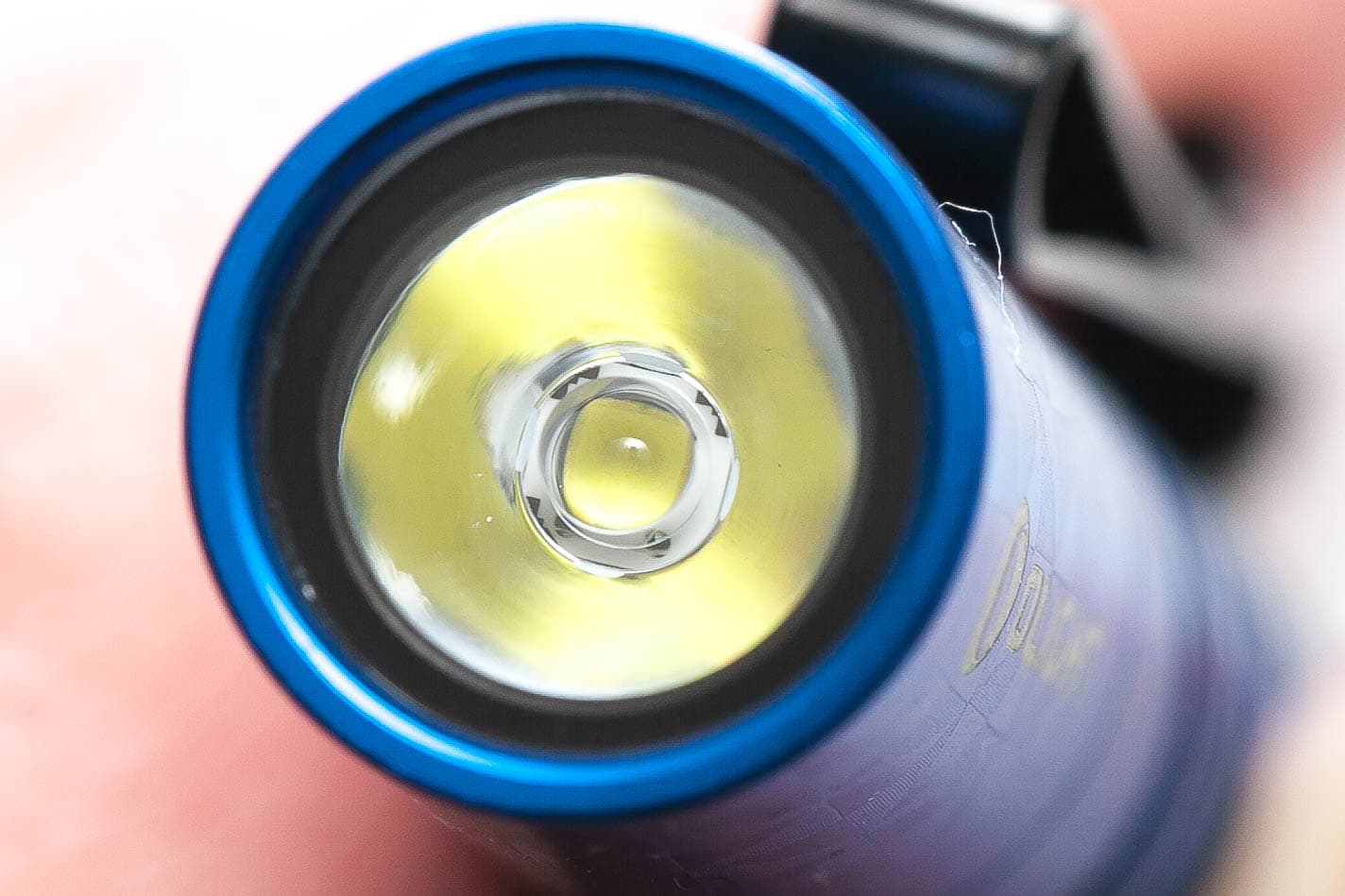
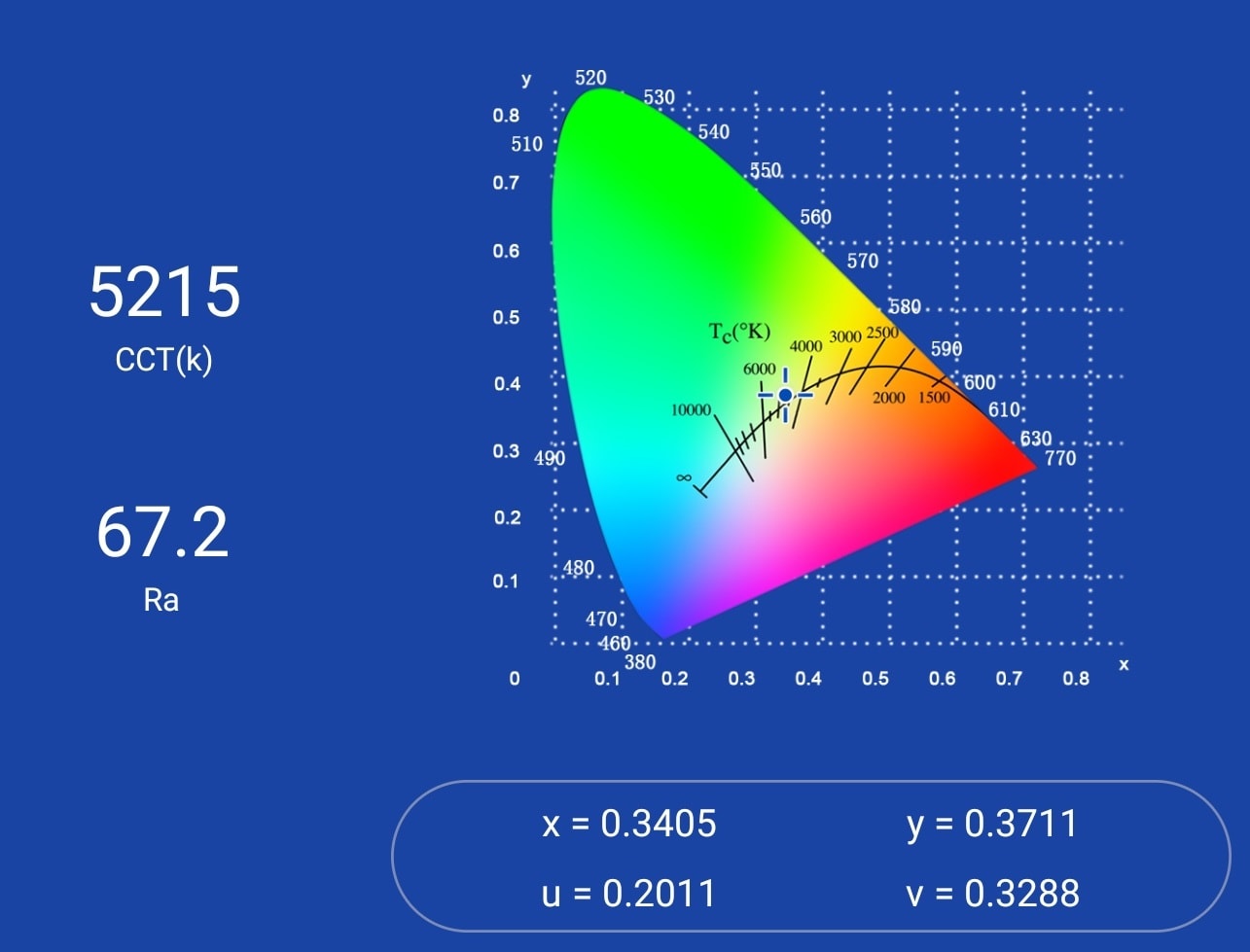
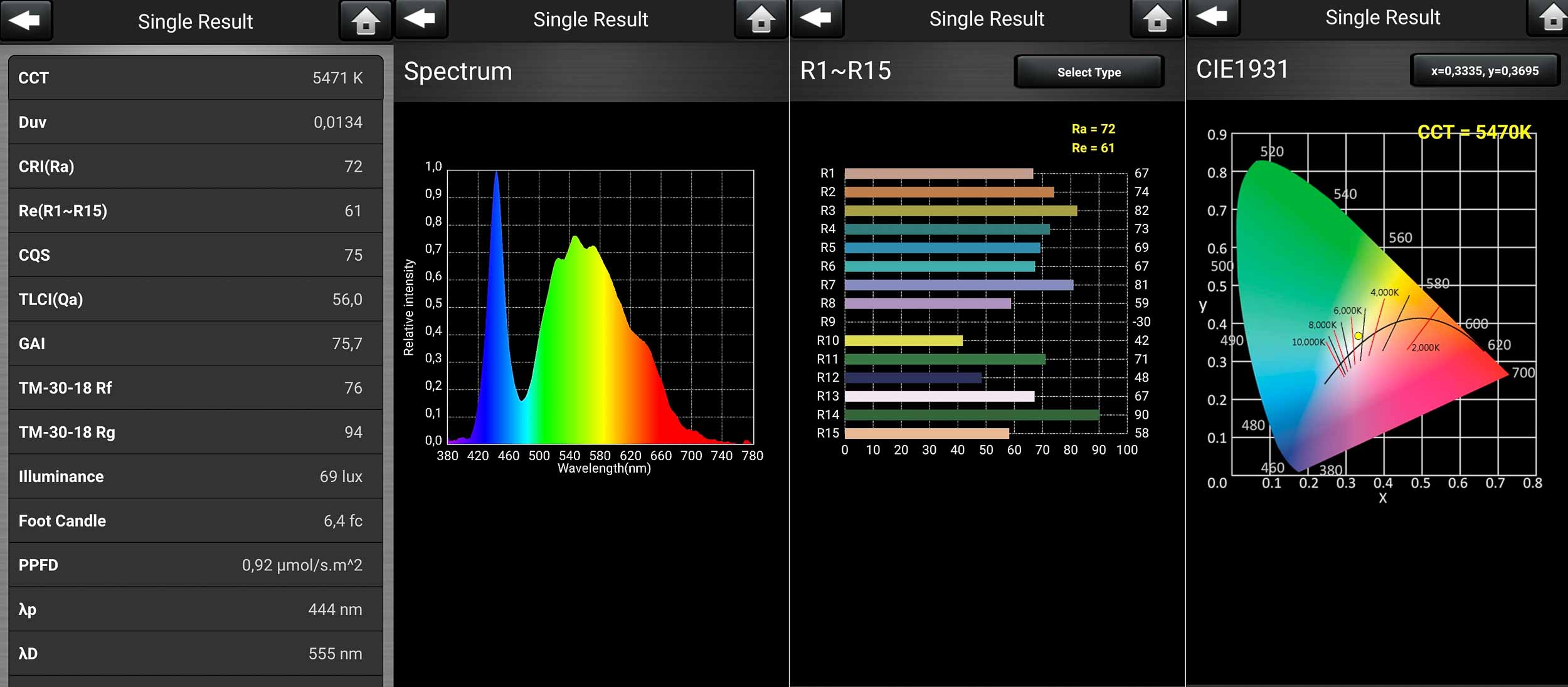
Dimensions and size comparison
Dimensions:
| Dimensions Olight i3T | Millimeters | Inches |
|---|---|---|
| Length | 89 mm | 3.5″ |
| Head + body diameter | 15 mm | 0.6″ |
Weight:
| Weight Olight i3T | Weight in grams | Weight in Oz. |
|---|---|---|
| Without battery: | 31 grams | 1.1 oz. |
| With Eneloop battery | 43 grams | 1.5 oz. |
Olight i3T EOS flashlight comparison
Size compared to other AAA flashlights
Group 1, from left to right: Olight i3T EOS , Olight i5R EOS HCRI
Group 2: Olight i3T EOS, Oligth i3T Plus
Group 3, AAA flashlights: Reylight Pineapple Mini, Oligth i3T EOS, Lumintop EDC01, Fenix LD01.

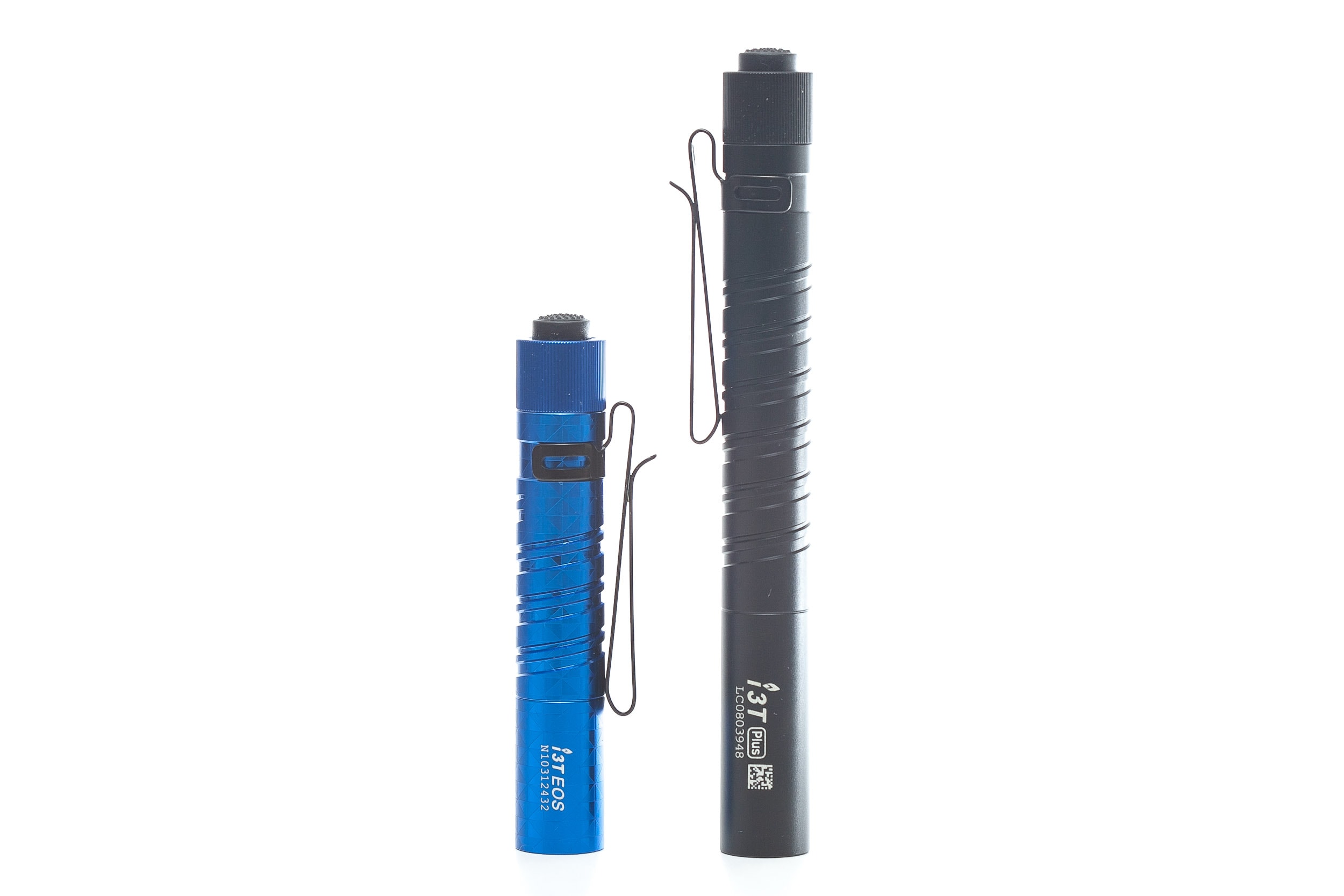
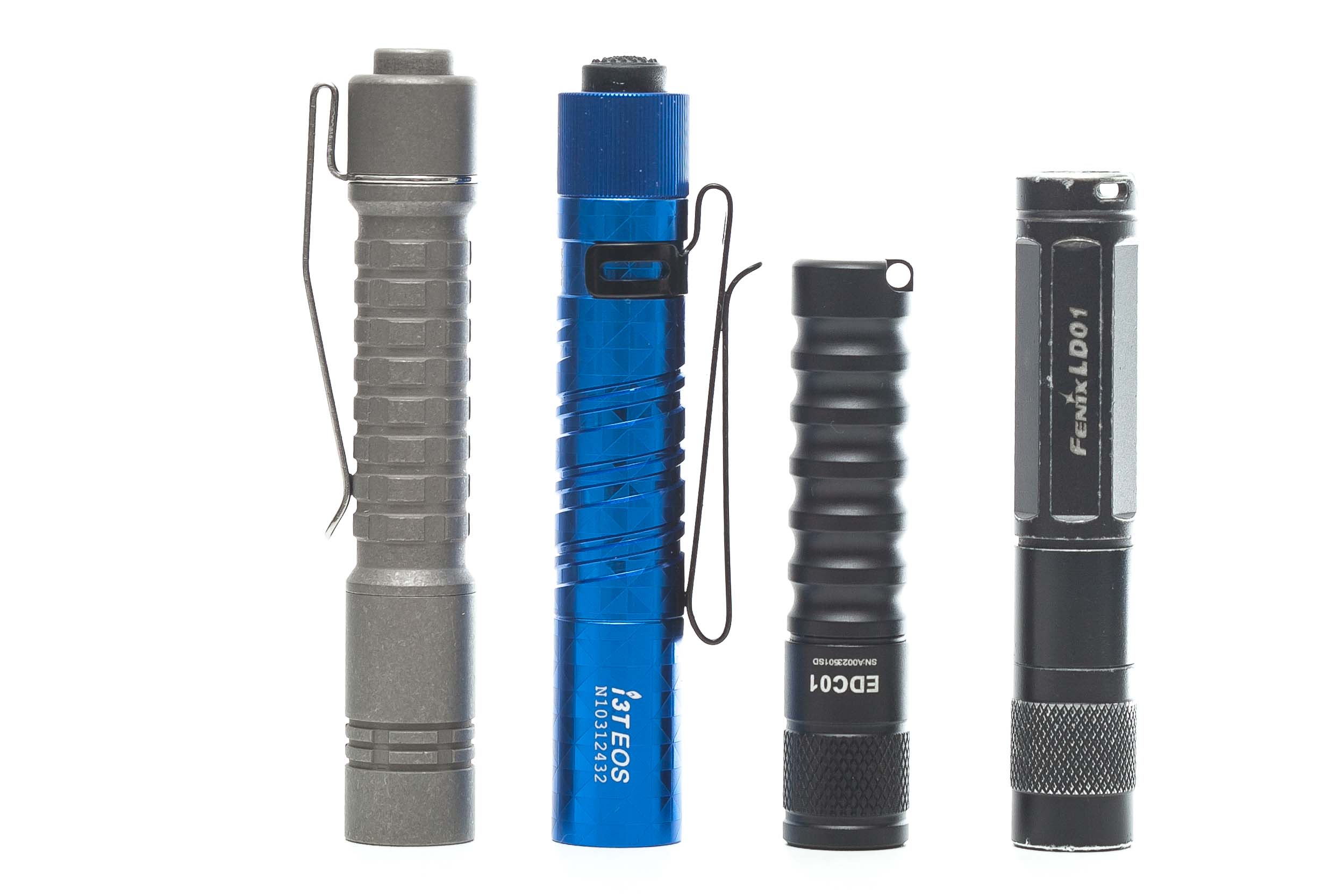
Driver & User Interface:
The i3T EOS has a simple UI with 2 modes and a forward clicky switch (that is protruding).
Available modes:
- Low, High
From OFF:
- Half-press: momentary On
- Single-click: Low
- Tapping: change between low and high mode
From ON:
- Single-click: Off
Shortcuts:
- There are no shortcuts. The first mode is always Low
Mode memory:
- No, it will always start in Low
Blinky modes menu:
- No
Low battery warning:
- No
Lock-out mode:
- No, just turn the light off.
PWM:
- Not visible by eye.
Batteries & Charging
Olight includes an Alkaline AAA battery, and I’d recommend using it directly, or just getting rid of it.
I wouldn’t trust alkaline batteries in my flashlight, especially not when the flashlight is not being used on a frequent base. Instead, I’d recommend getting rechargeable AA batteries like Panasonic Eneloop (just the white ones) or similar.
There’s just too many times Alkaline batteries destroyed flashlights, so be warned.
Even though 10400 batteries will fit, they are likely going to fry the flashlight! Don’t do it.
BTW. if you are going to use the included battery, make sure you don’t leave it in the flashlight for too long. Also, I don’t recommend keeping the flashlight in the box for too long, because the battery is loaded inside the flashlight. Even though it has an insulating film for not shorting the battery, it doesn’t help against leaking.

Performance test
This is the gear I used for testing:
| Gear | Purpose | Link to buy |
|---|---|---|
| Hagner E4-X | Measuring beam intensity (throw) | Inquire at Hagner.se |
| Extech SDL400 | Lumens and logging runtimes | Amazon.com, Amazon.co.uk, |
| Leica Disto D2 | Distance for throw measurements | Amazon.com, Amazon.co.uk, |
| Asensetek Lighting Passport Pro Standard | Spectrometer for LED measurements | – |
Lumen measurements:
The output measurements in this review are based on my homemade integrating spheres, each equipped with an Extech SDL400 Lux Meter. For consistency and accuracy, a calibration light (Convoy S2+ with 249lm and a Convoy S2+ with 261lm) is measured prior to each set of lumen measurements.
For high-output lights, one of the lux meters uses an ND camera filter to prevent the lux meter to max out. This is either the Kenko PRO1D ND16 up till about 80,000 lumens or Gobe ND32 for anything above.
The batteries used were:
- Included alkaline battery
- Panasonic Eneloop AAA 750mAh (4th gen)
- Xtar 1.5V rechargeable Lithium battery
The measurements for Eneloop and Xtar were taken manually at turn on and 30 seconds, while the Alkaline (because it is not rechargeable) were taken directly from the runtime graph. The 10-minute numbers are taken from the runtime test for all.
| Mode | Specs | Turn on | 30 seconds | 10 minutes |
|---|---|---|---|---|
| Low (eneloop) | 5 lm | 7 lm | 7 lm | 7 lm |
| High (eneloop) | 180 lm | 192 lm | 191 lm | 189 lm |
| High (Alkaline) | 180 lm | 192 lm | 191 lm | 40 |
| High (Xtar 1.5V) | 180 lm | 192 lm | 191 lm | 189 lm |
The output on the Alkaline dropped just after the 30 seconds reading!
Parasitic drain:
- There shouldn’t be any with a mechanical switch
Olight i3T EOS battery life and runtime graphs
The runtime test was done with the 50cm home made integrating sphere, combined with the Extech SDL400 data logging Lux Meter.
The first graph shows Low and High with an Eneloop. The second graph is High mode, comparing the included Alkaline, Eneloop and Xtar 1.5V lithiums.
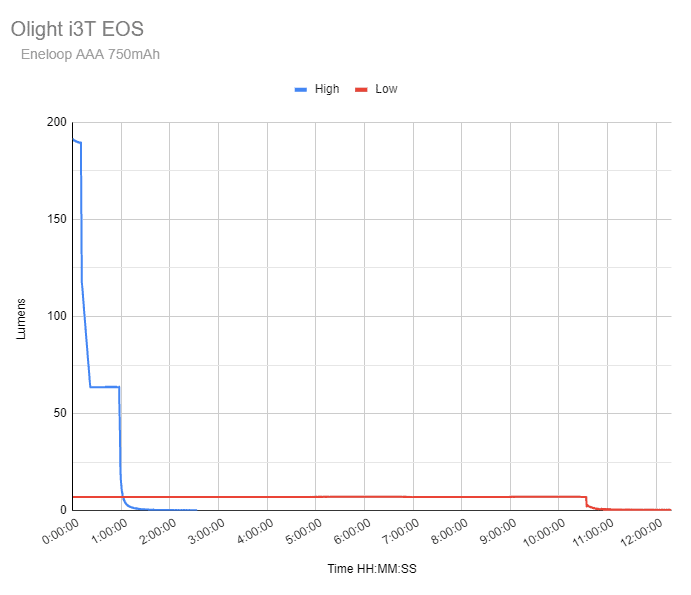
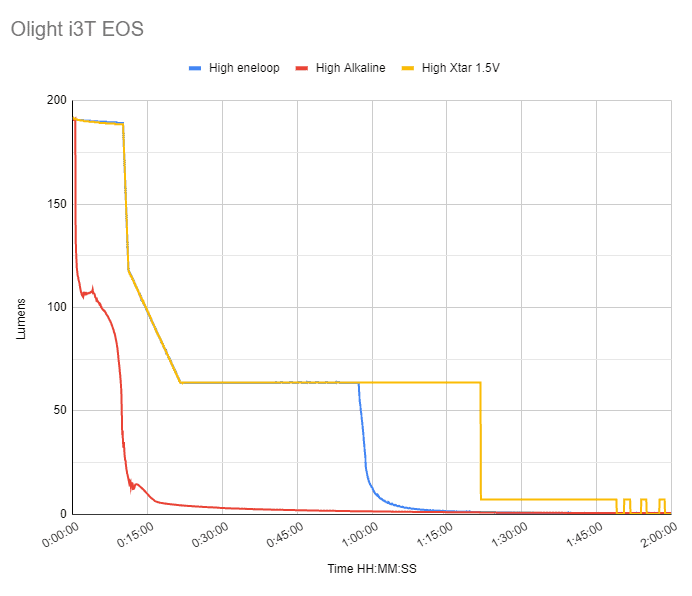
| Mode | Specified | Measured runtime (ANSI FL1) | Time till shut off |
|---|---|---|---|
| Low (Eneloop) | 16h | 10h 15min | 11h 03min |
| High (Eneloop) | 21min | 59 min | 1h 43min |
| High (Alkaline) | 21min | 11min | 2h 34min+ |
| High (Xtar 1.5V) | 21min | 1h 21min | 1h 49min+ |
The Eneloop and Xtar are very, very close, but the Xtar outperforms the Eneloop in total runtime.
Eneloop:
Low mode with Eneloop started blinking (kind of) after 10 hours and 15 minutes, but the first time it really measured 0 lumens was after 11h 03min, but it was still turning off and on. High mode started blinking (turning on and off) after 1h 43minutes.
Olight’s measurements were likely done with the Alkaline battery, with the Eneloop I couldn’t get even close to the Low mode runtime.
Alkaline:
**Also, High mode with Alkaline just kept going, even after 2h 34min when I stopped the test. At that point it was producing about 0.3 lumens. Alkaline is clearly the loser in terms of total power/brightness.
Xtar 1.5V lithium
The Xtar had the same performance as the Eneloop, but ran longer. Towards the end, the light turned on and off for quite a while. Even after 3 hours it was still turning on and off.
ANSI FL1 standards: The runtime is measured until the light drops to 10% of its initial output (30 seconds after turning on). This does not mean that the flashlight is not usable anymore. The last column shows how long the light actually works till it shuts off. If there is a + symbol, it means that the test was stopped at that particular point, but the light was actually still running. This happens on certain occasions, with certain drivers, firmware, or batteries.
Olight i3T EOS peak beam intensity and beam distance measurements
Measurements were taken indoors with a Hagner E4-X Lux Meter at 5 meters, and lux meter set to 0.1 for Low mode. Measured after 30 seconds. Measured with Eneloop AAA 750mAh
| Mode | Specified | Candela measured | Meters | Yards |
|---|---|---|---|---|
| Low | – | 38 | 12 | 13 |
| High | 900 cd | 1,100 cd | 66 | 73 |
In terms of beam intensity, it performed a bit better than spec.
Extra info: Peak beam distance according to ANSI FL1 standards: The calculated value of distance in meters at which the flashlight produces a light intensity of 0.25 lux. (0.25 lux is about the brightness of a full moon shining on an object).
Beamshots
For the following beamshots I used a Canon EOS 5D Mk2 and a 50mm lens.
The wall of the shed is 5 meters, and the fence is 4 meters. The camera was set to 1/30 F3.5, 5000K, ISO1600.
Compared to the following flashlights:
- Olight i3T
- Olight i3T 2
- Olight i5R EOS
- Olight i5R EOS HCRI
- Olight i3T Plus (2AAA)
- Reylight Pineapple Mini (AAA)

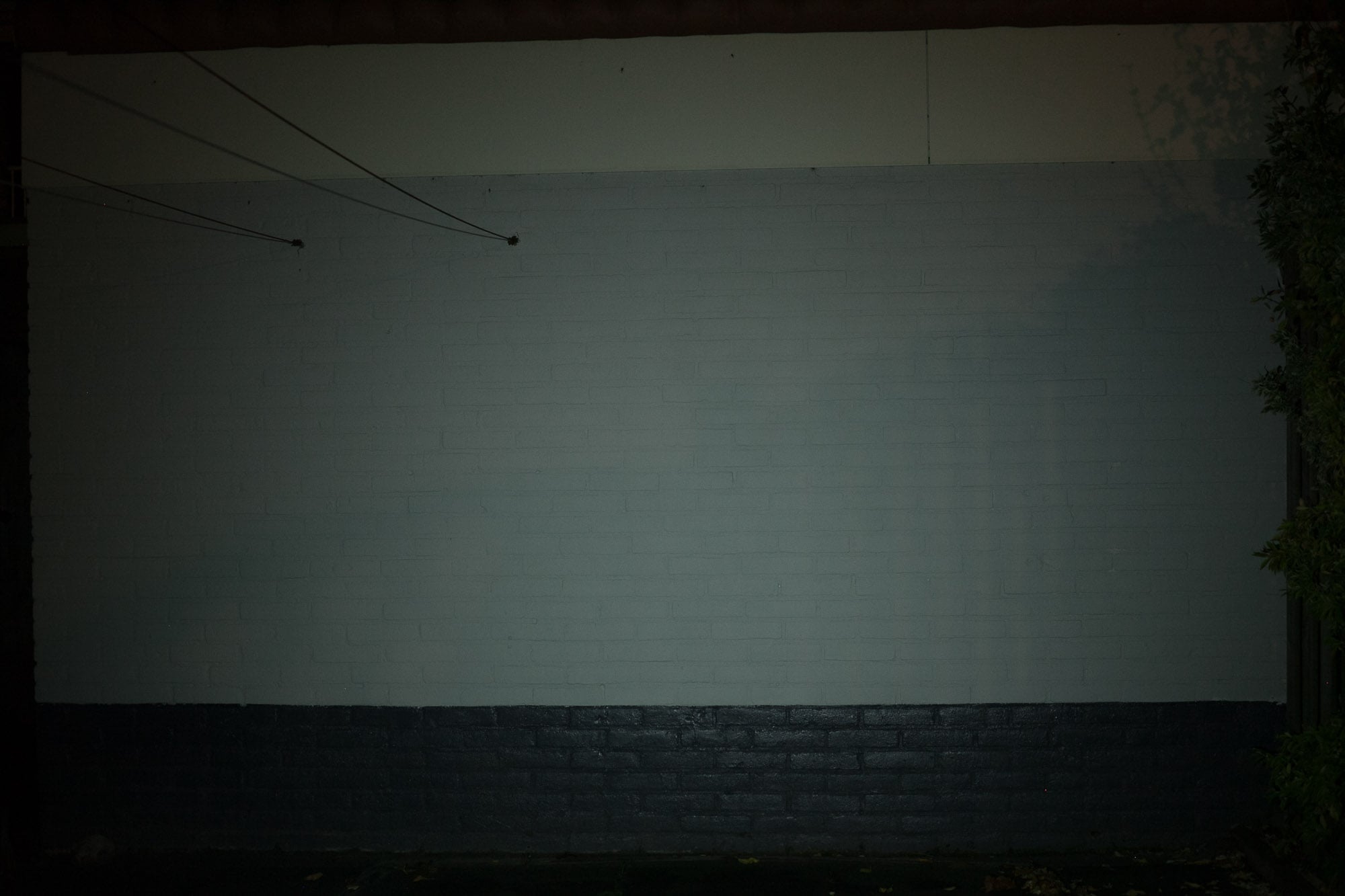
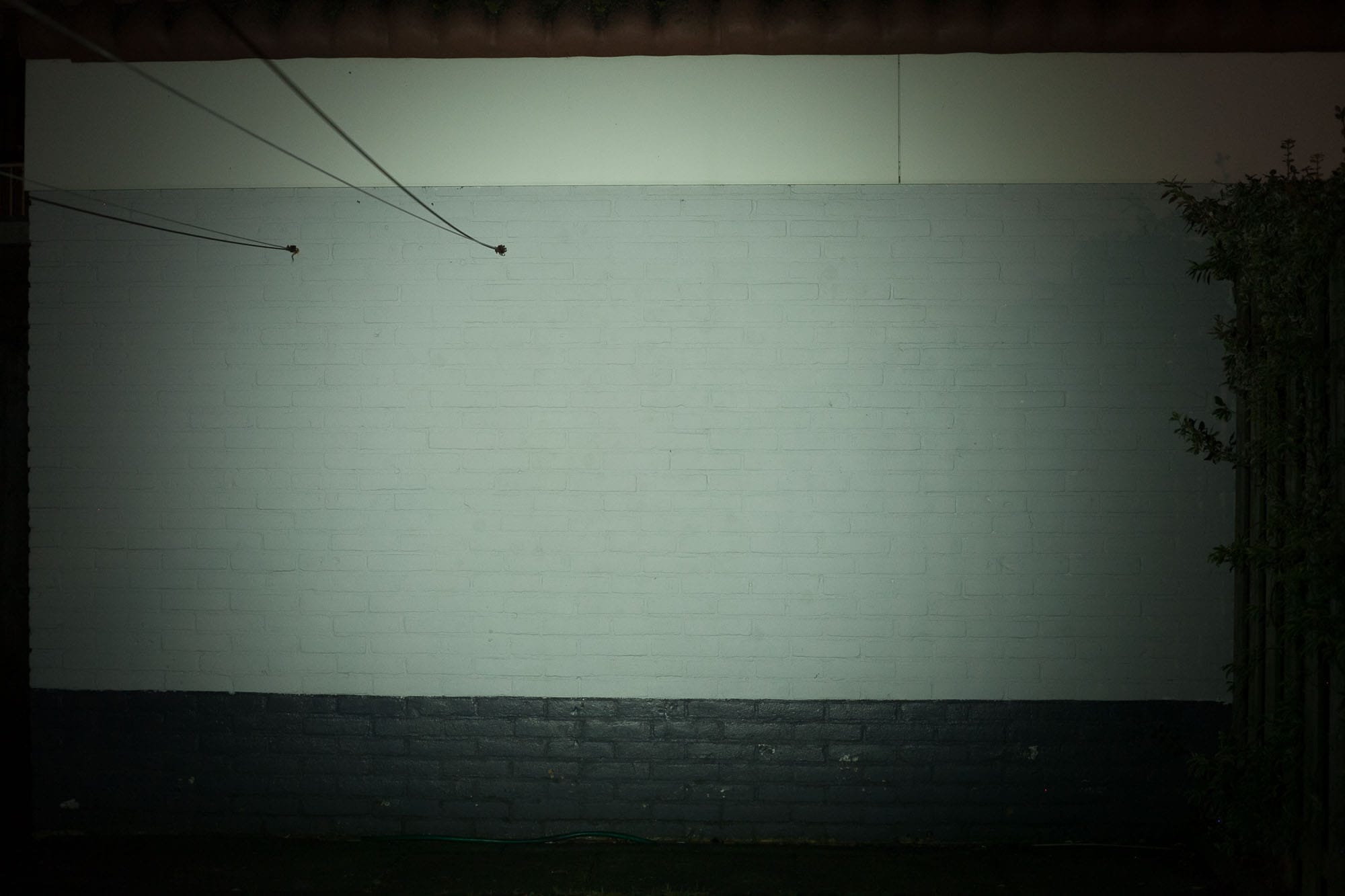
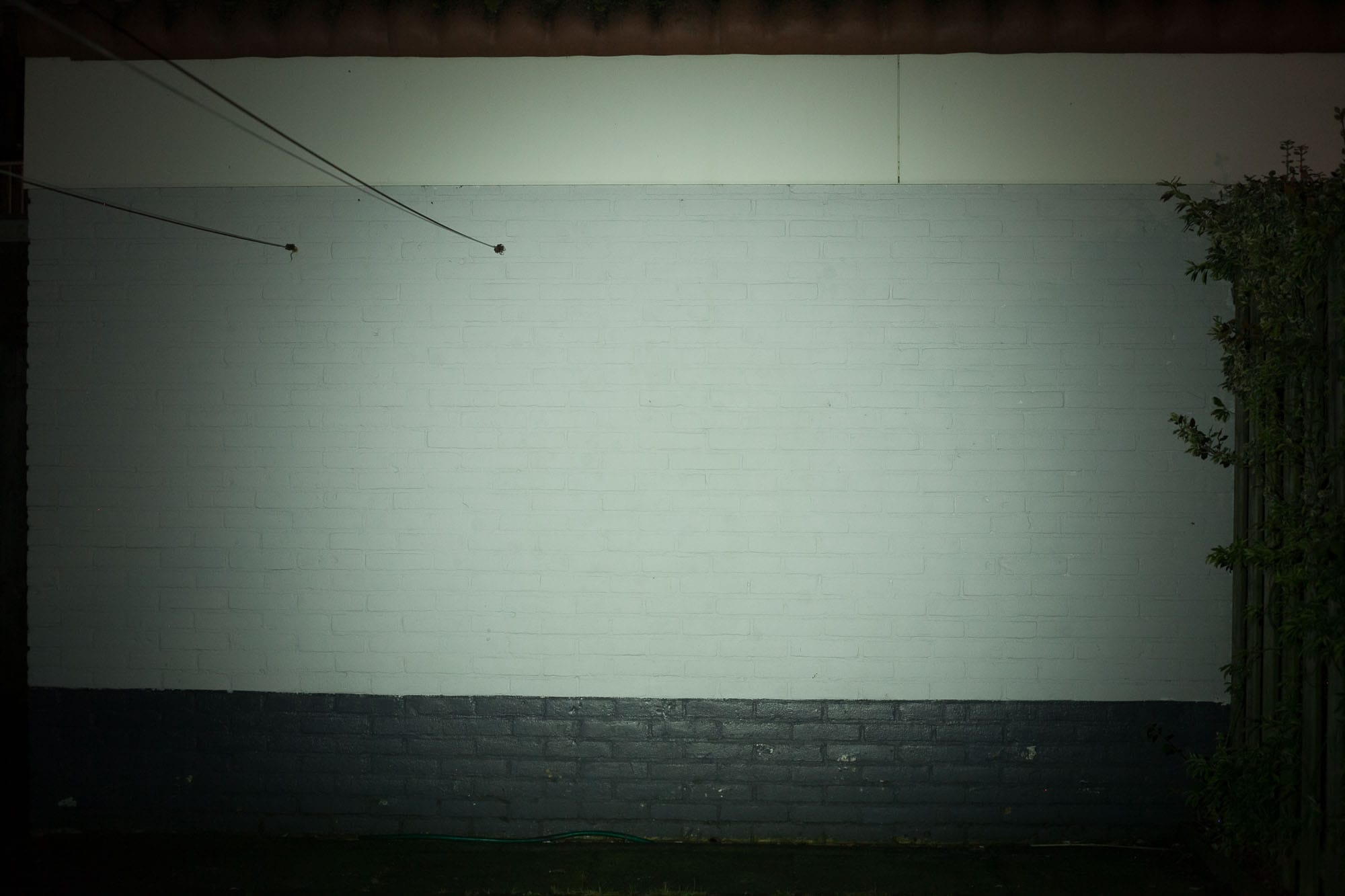
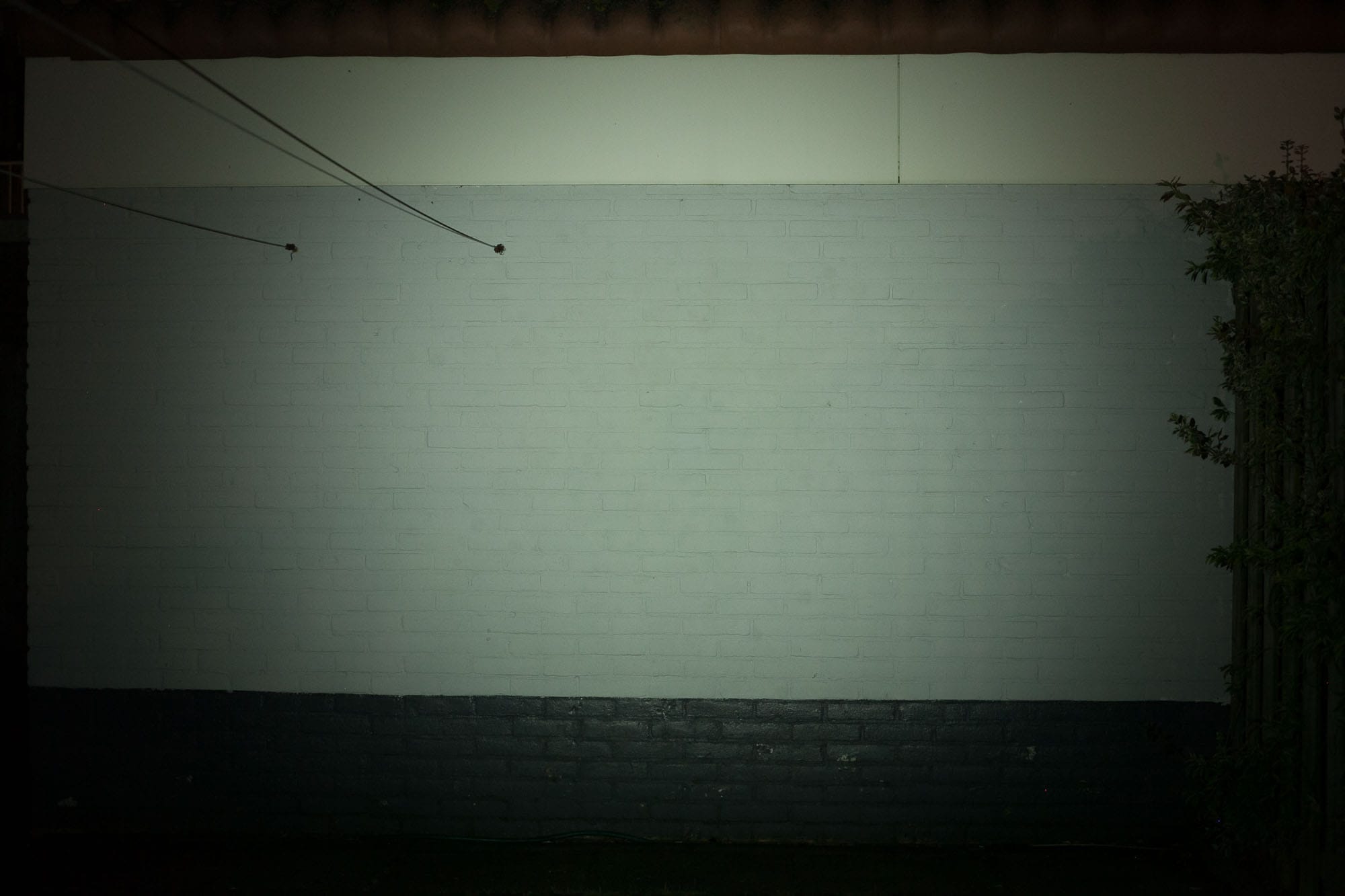
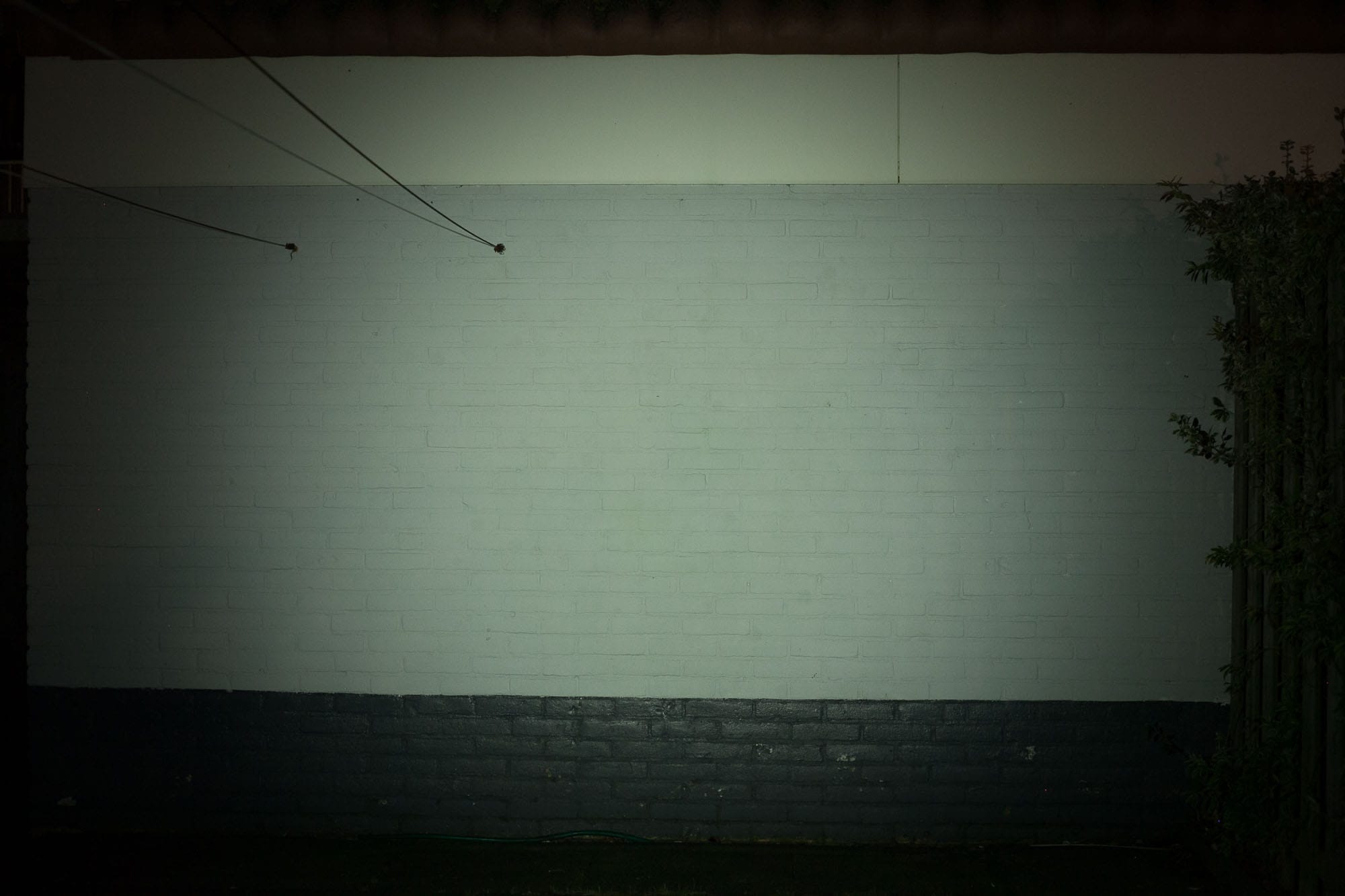
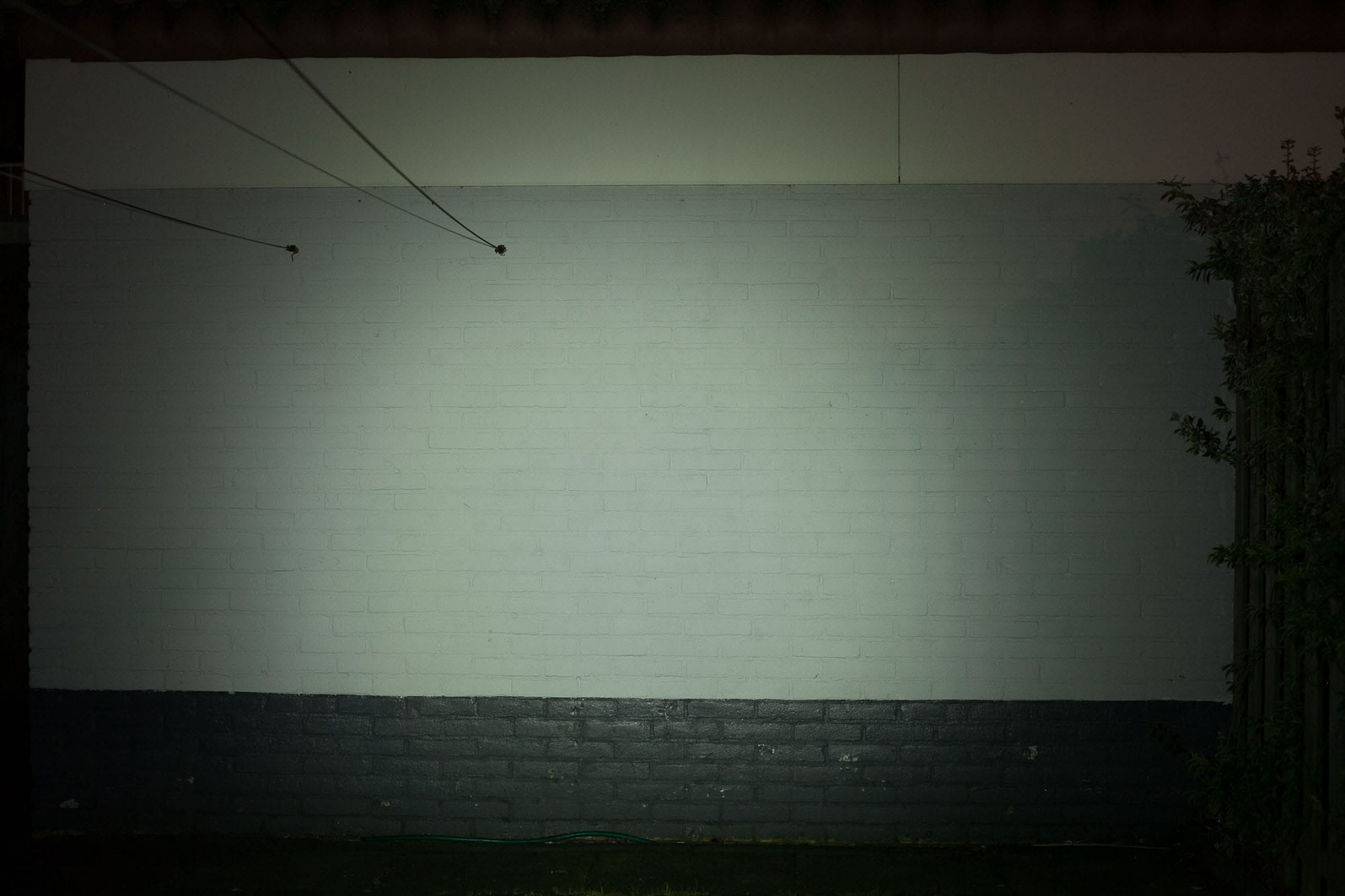
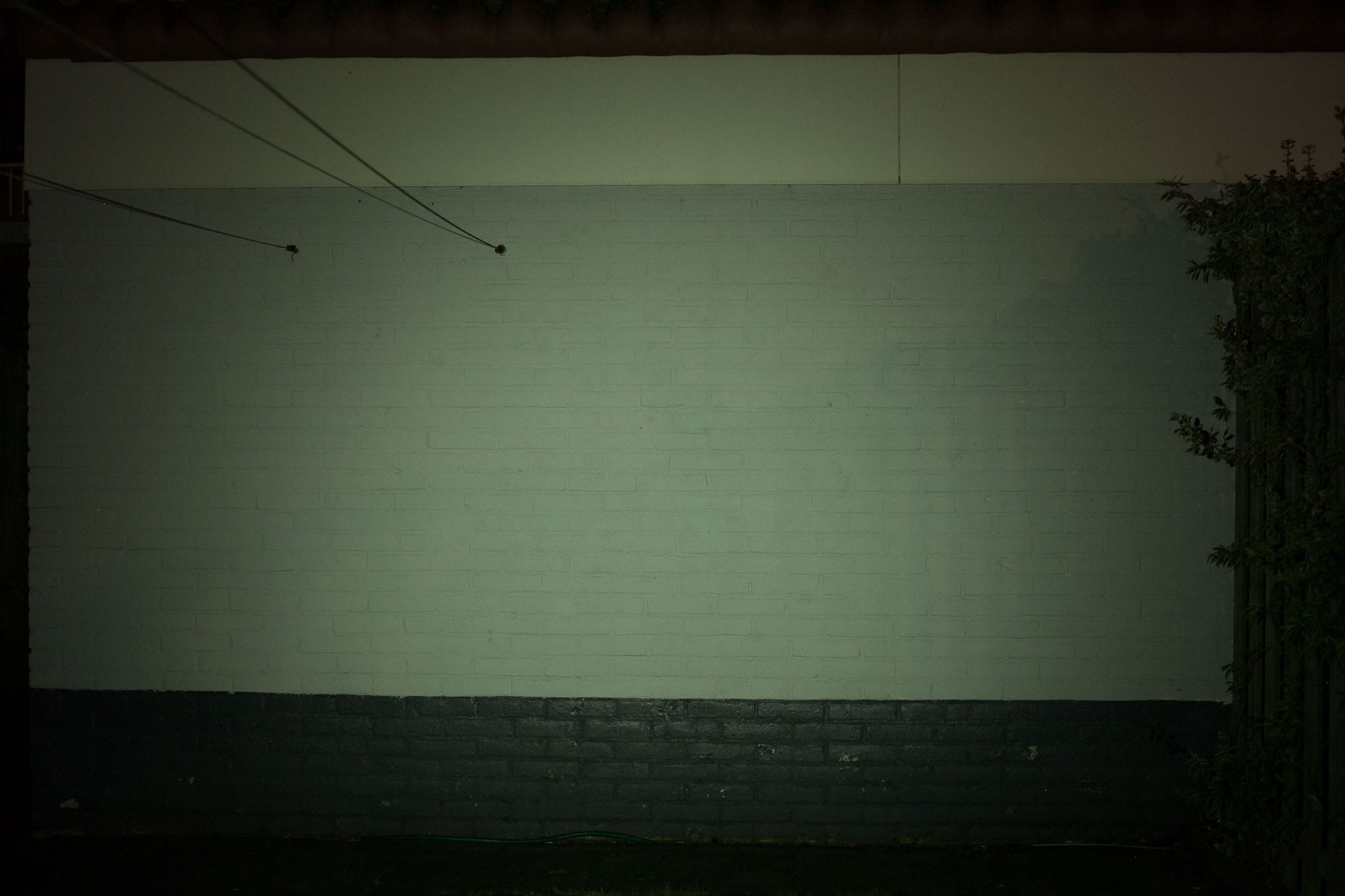

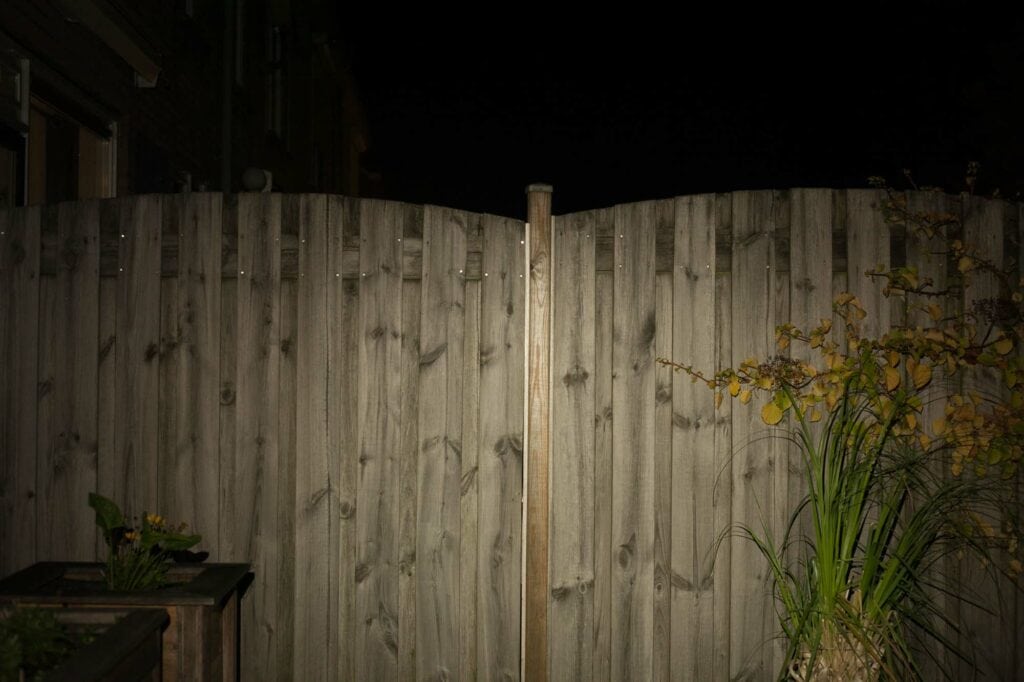
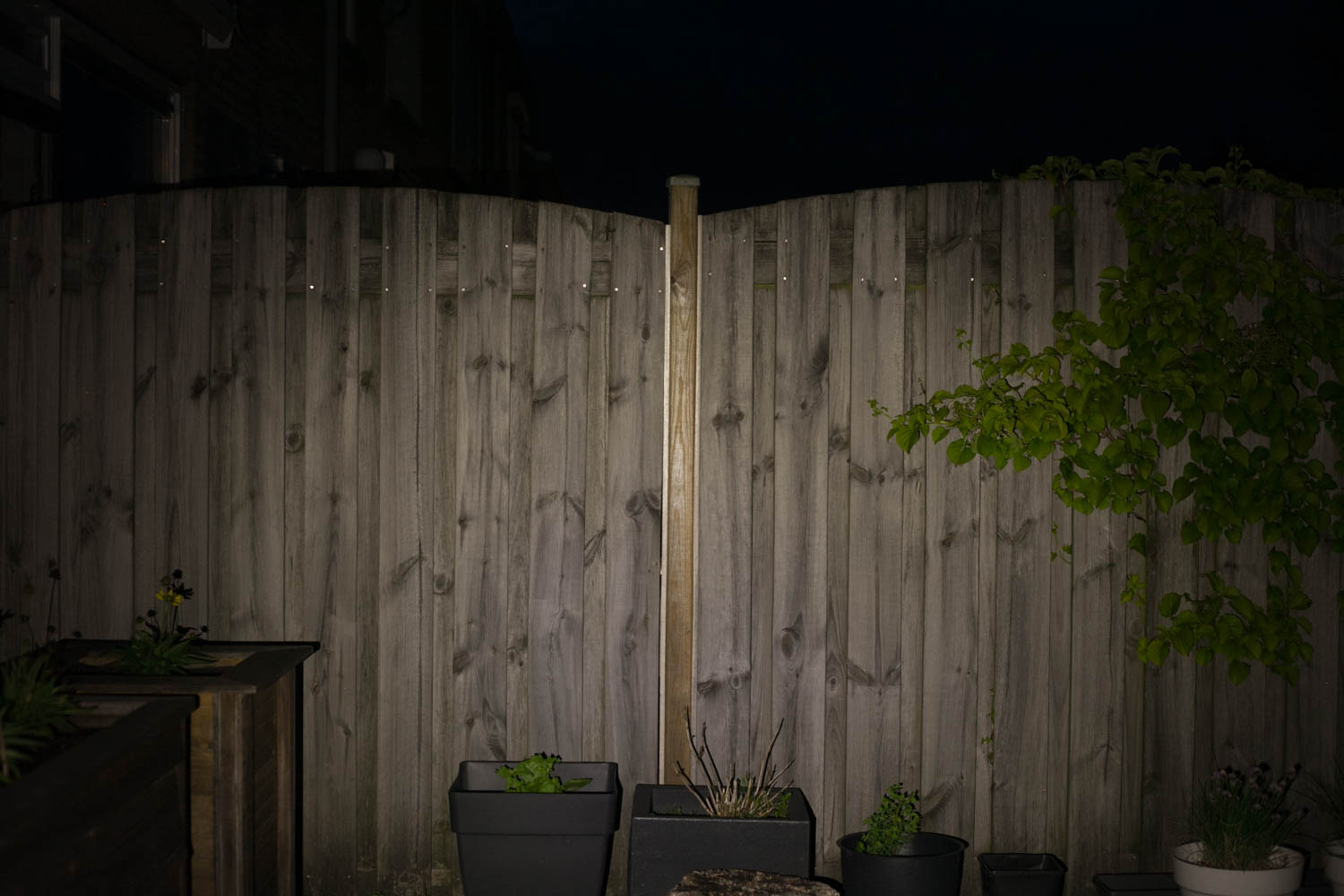
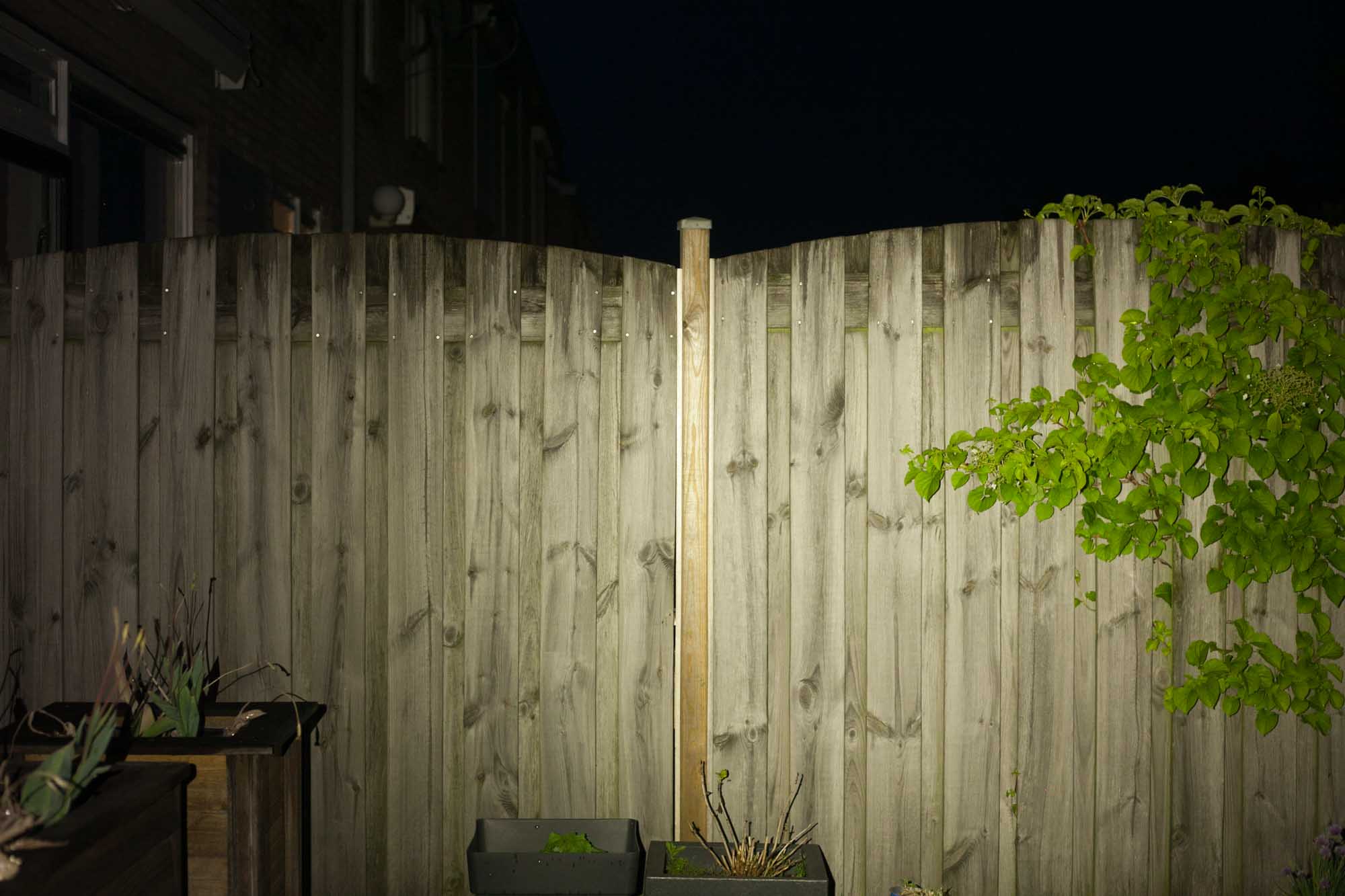
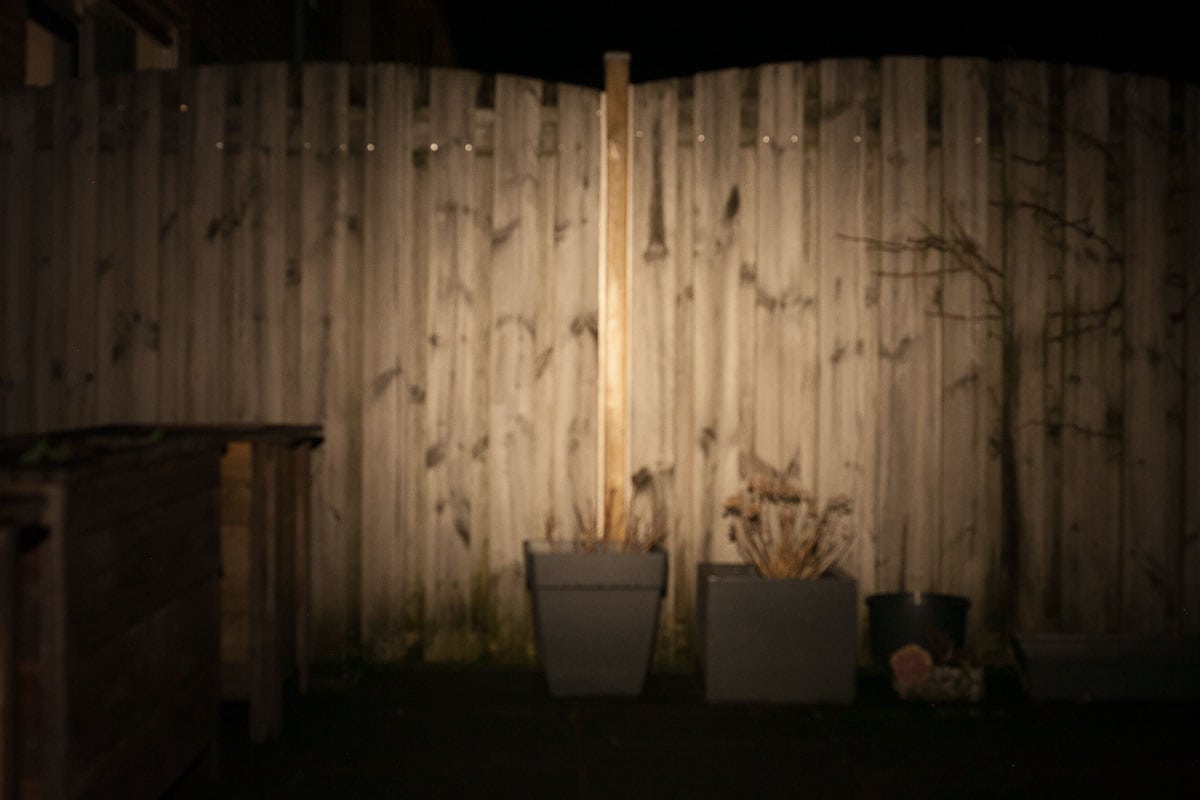
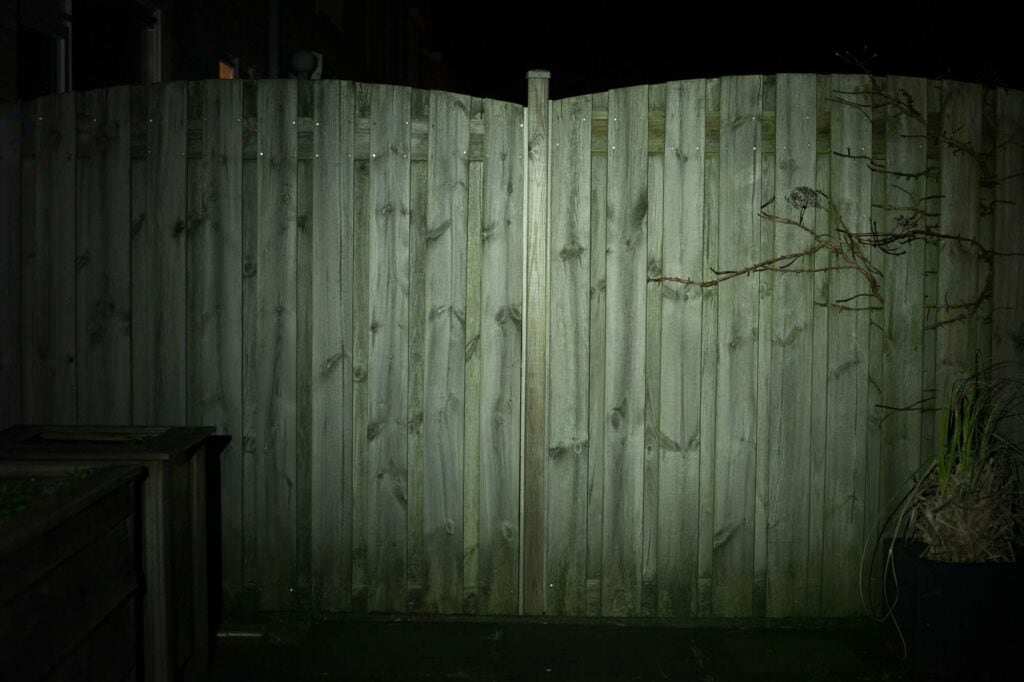
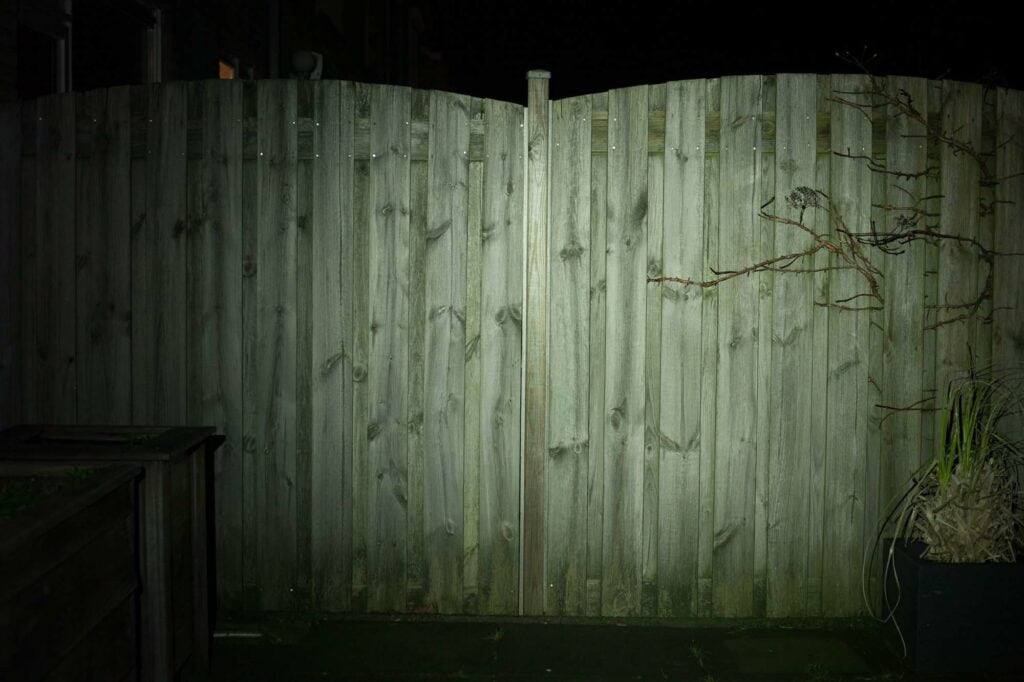
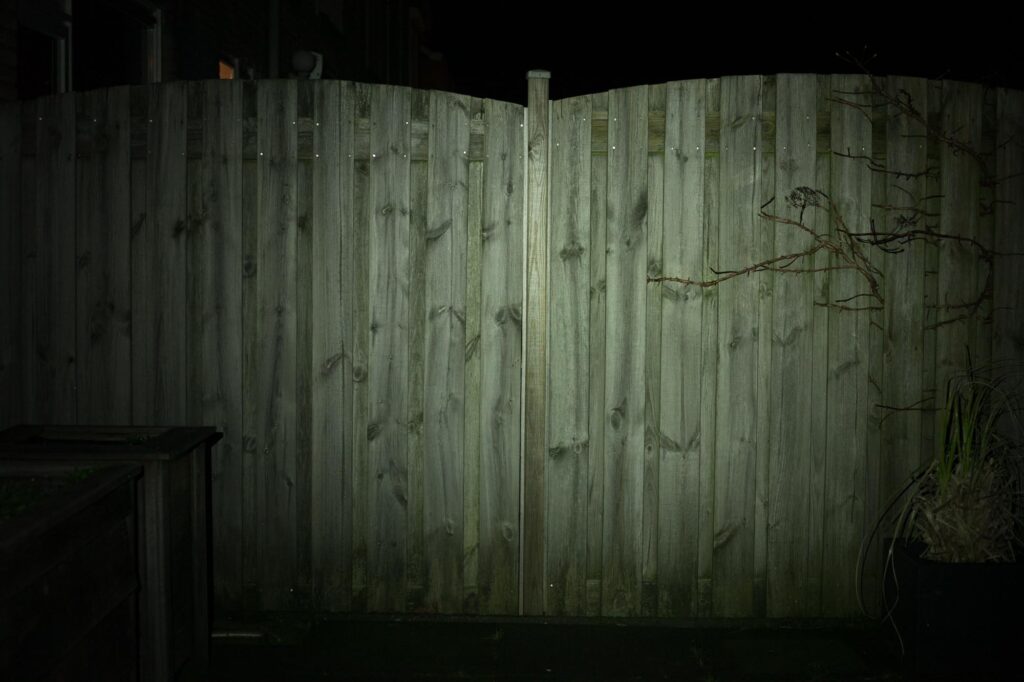
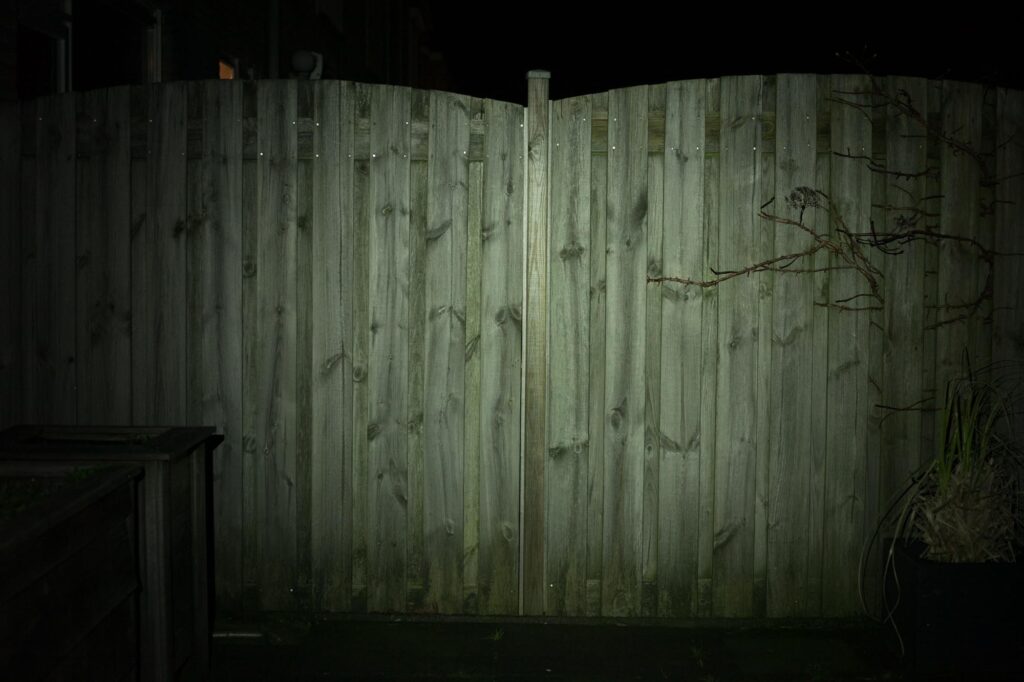
Disclaimer: This flashlight was sent to me for review at no cost by Olight. I have not been paid to review, nor have I been holding back on problems or defects.
Final Verdict
Pros
- Simple UI with 2 modes
- 2-way pocket clip included (clip on your hat)
- Works also with all kinds of AAA batteries, Alkaline, Lithium 1.5V, rechargeable NiMH, NiCD etc.
Cons
- Need to use the pocket clip in order to attach it to your keys
- Not sure what to think of the runtime specs
Explanation on star ratings:
1: Avoid: my phone flashlight would be a better choice – 2: Poor: significant defect or issues; almost unusable – 3: Average: some defects or issues; but still usable 4: Good: recommended (minor issues) – 5: Great: highly recommended
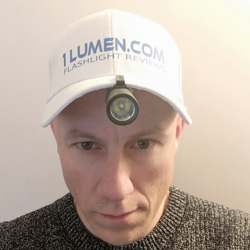
4.5 stars: ★★★★⋆
The i3T is definitely a very nice little flashlight. It’s currently one of the brightest dedicated AAA flashlights out there. (Not taking into account the 10400 powered lights)
The only real downside is the lack of a keychain attachment on the flashlight itself. You need to use the pocket clip to connect it. This could be a pro and a con. For me, as a keychain light, I don’t want to use the pocket clip.
However, for EDC, the 2-way clip is great, because you can easily clip it to a baseball cap.
Just keep in mind to finish the included Alkaline battery as soon as possible, and get yourself some rechargeable batteries like the Panasonic Eneloop, or even the 1.5V Xtar lithiums.
Buy Olight i3T EOS Pinwheel with a discount
Use our exclusive 1lumen discount code to get an extra 10% off anything you order at Olightstore.com (USA). Coupon code: 1lumen
1lumen selects and reviews products personally. We may earn affiliate commissions through our links, which help support our testing.